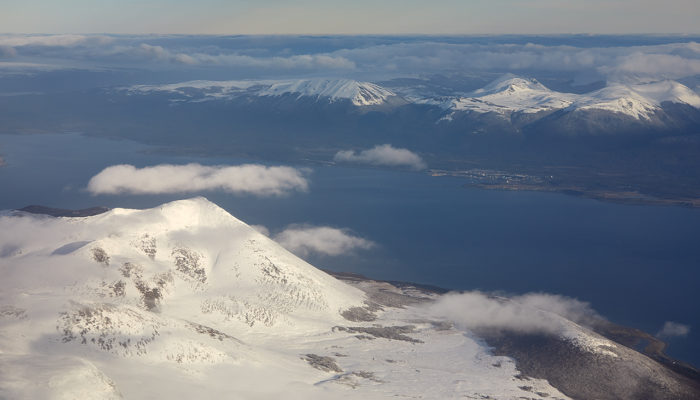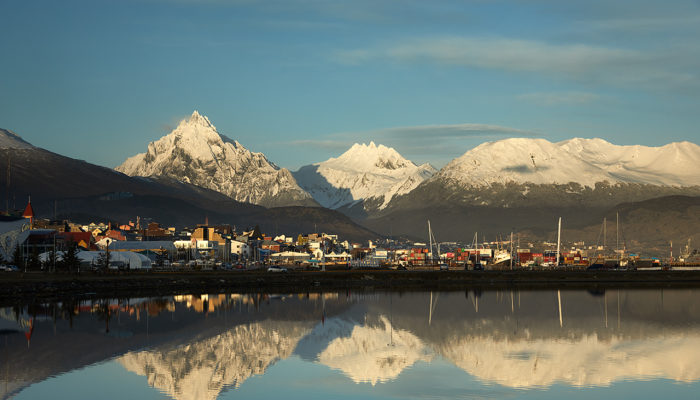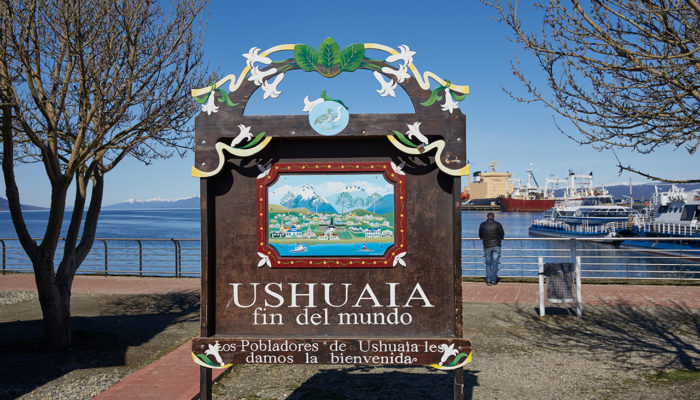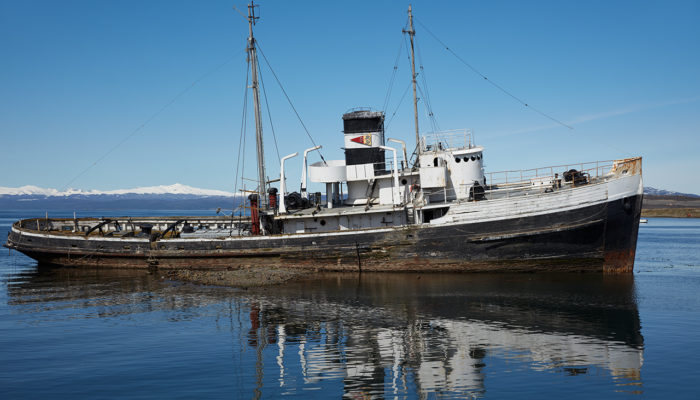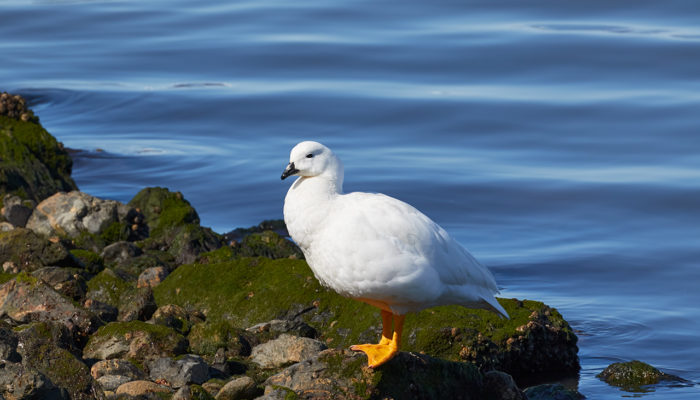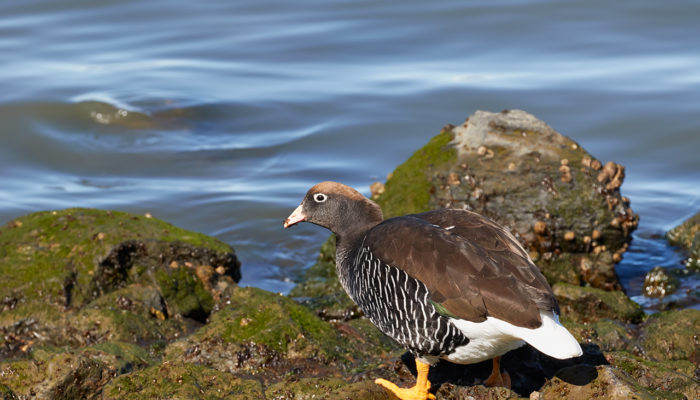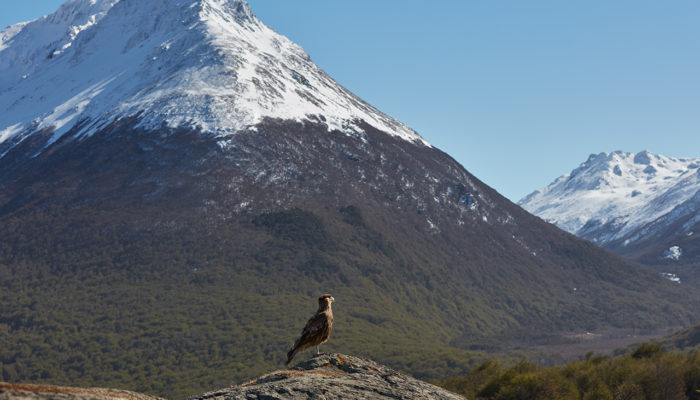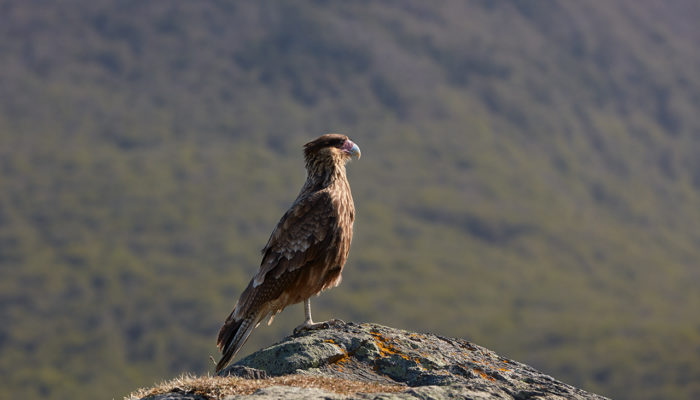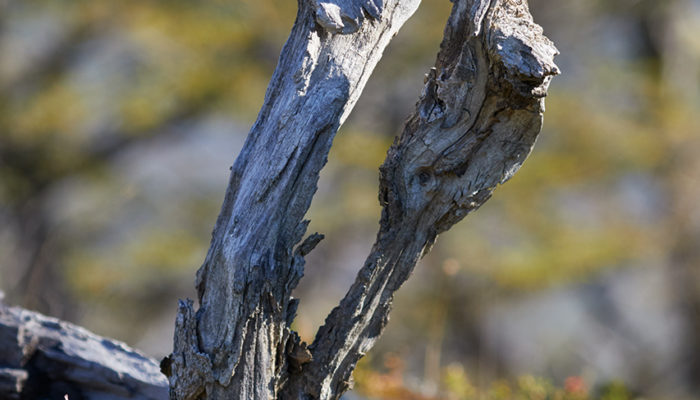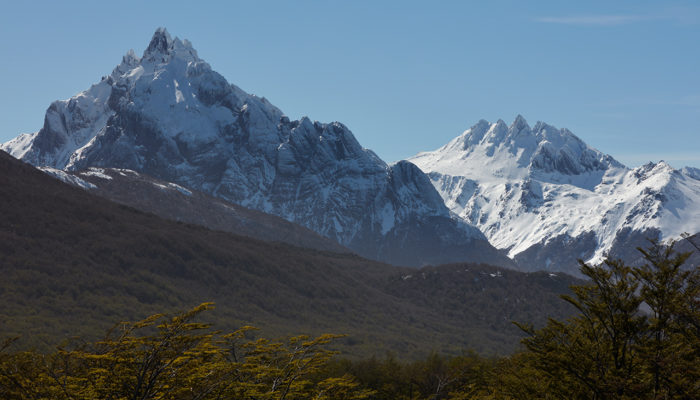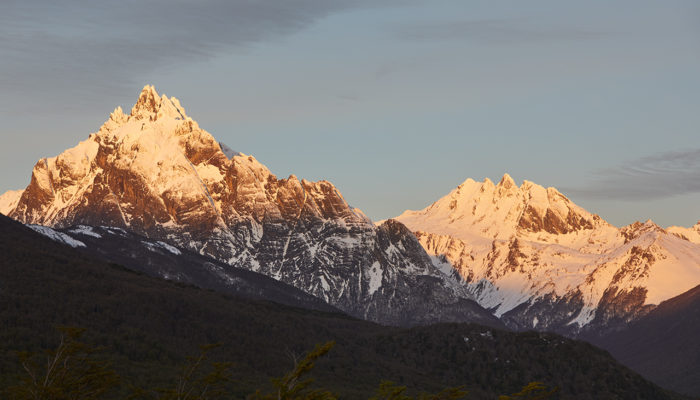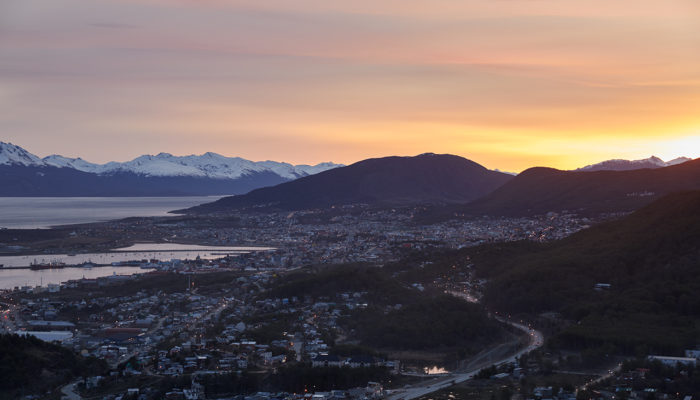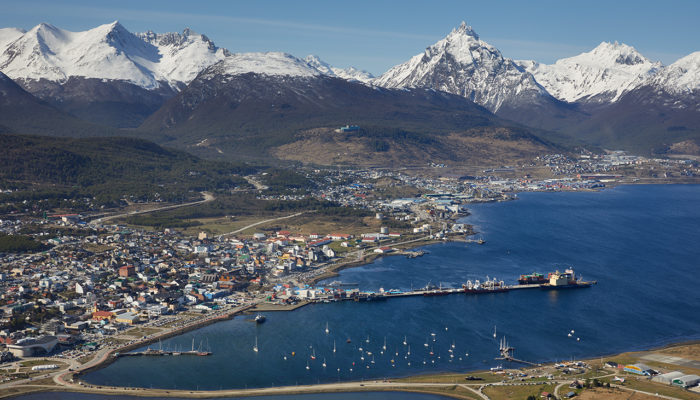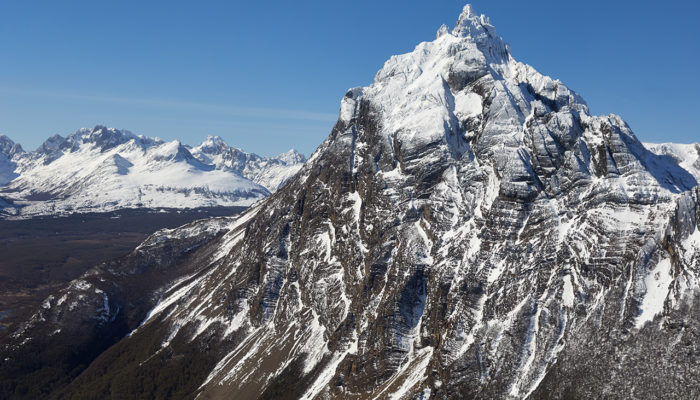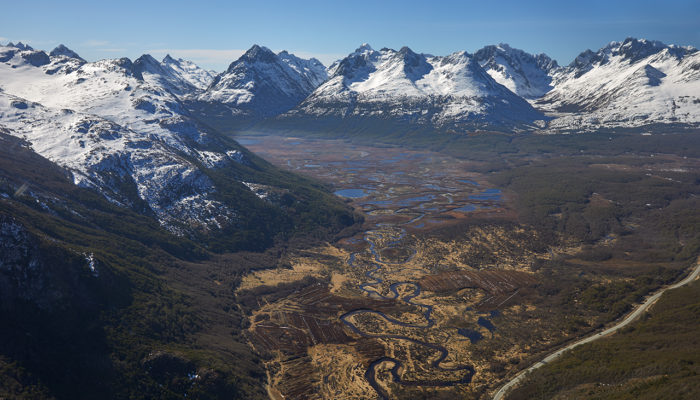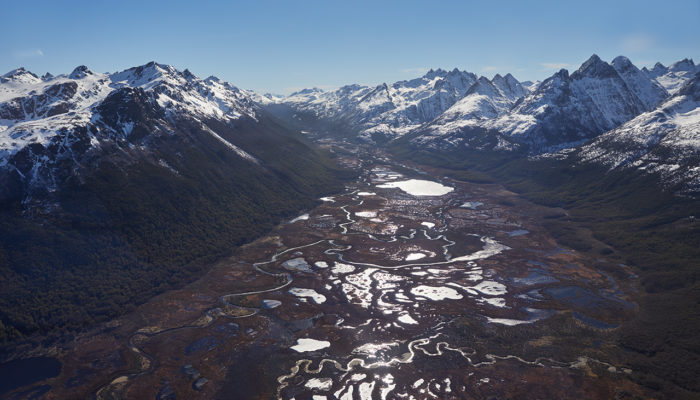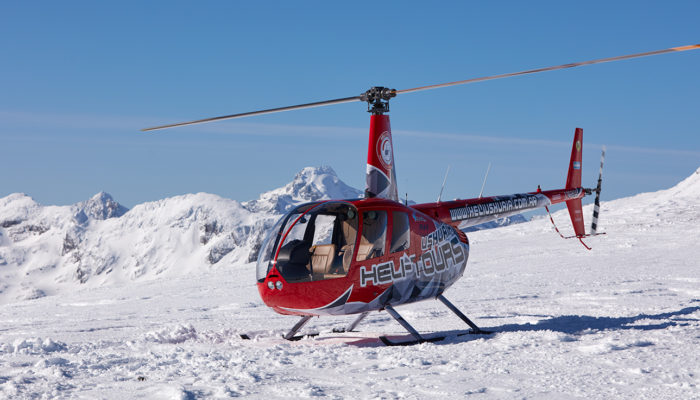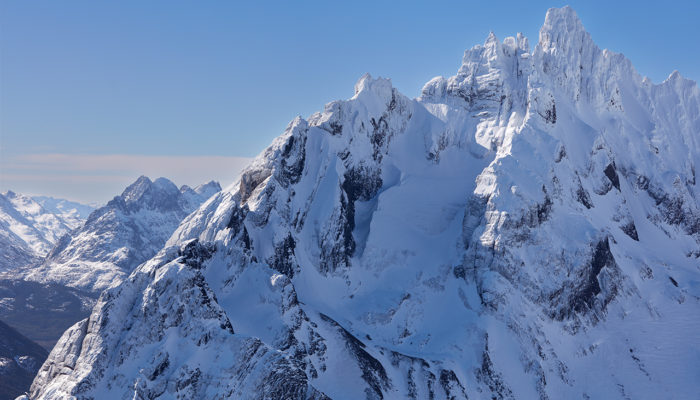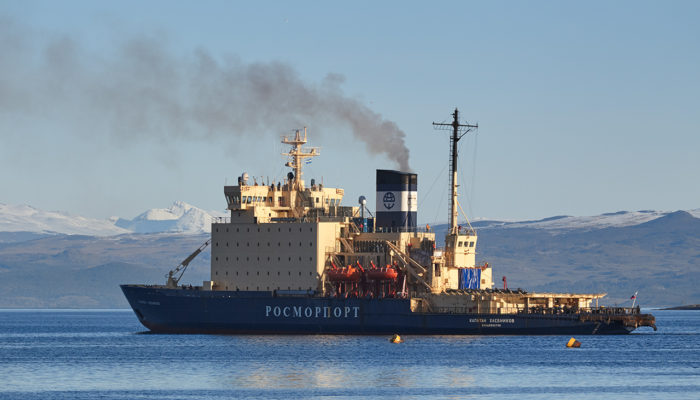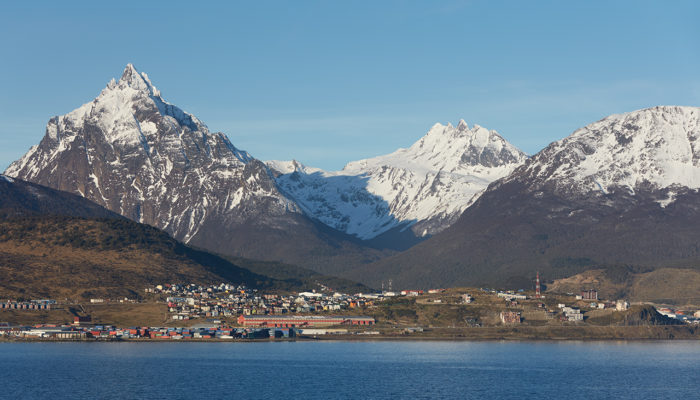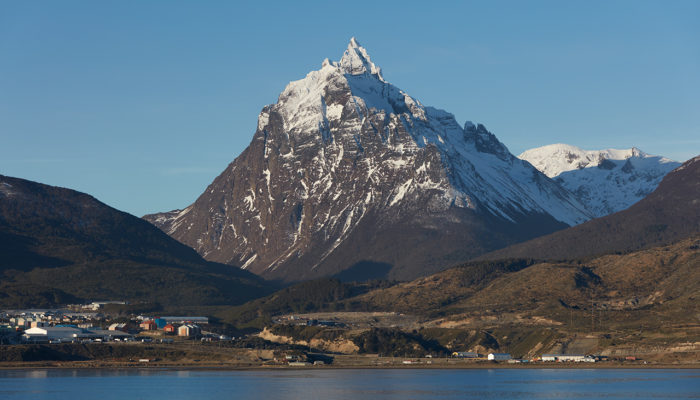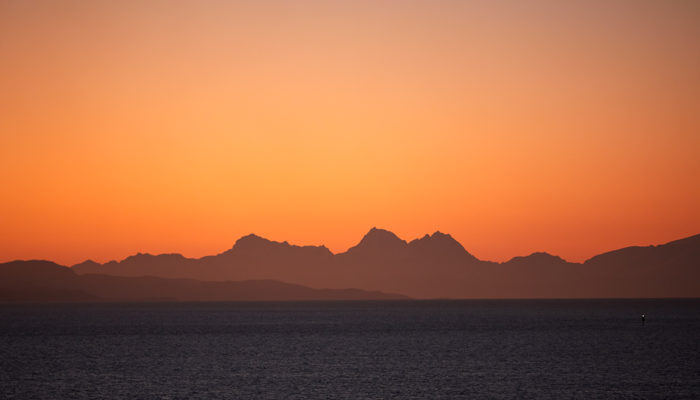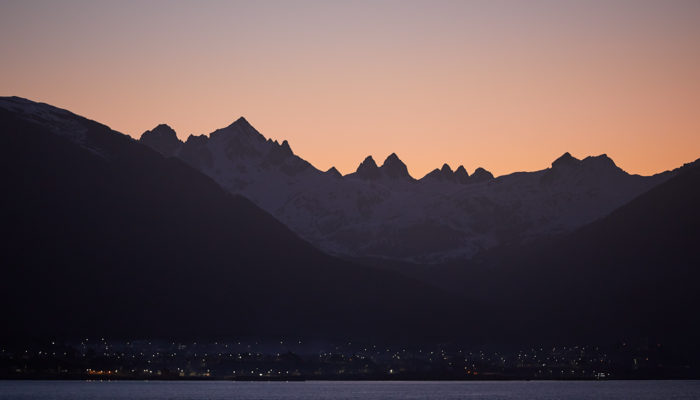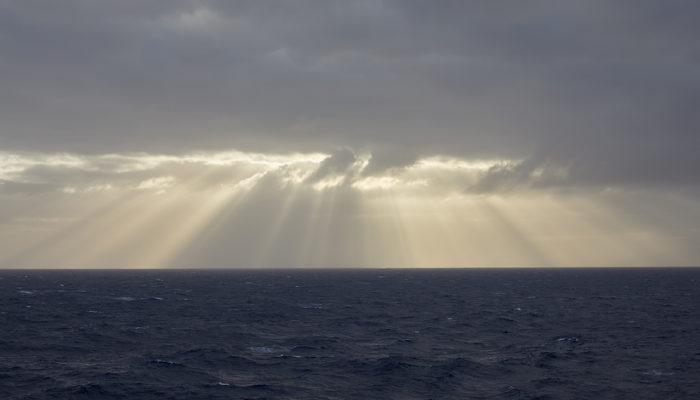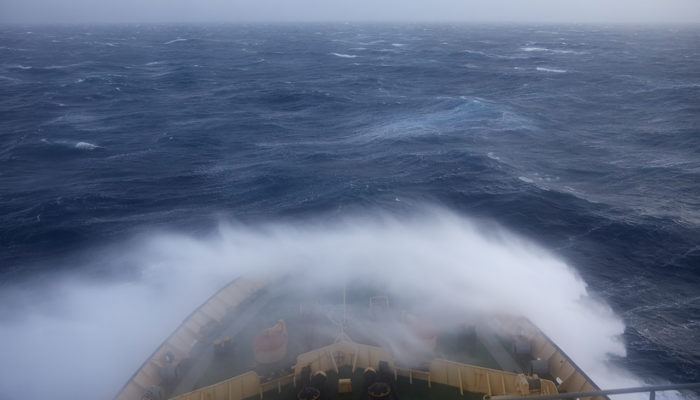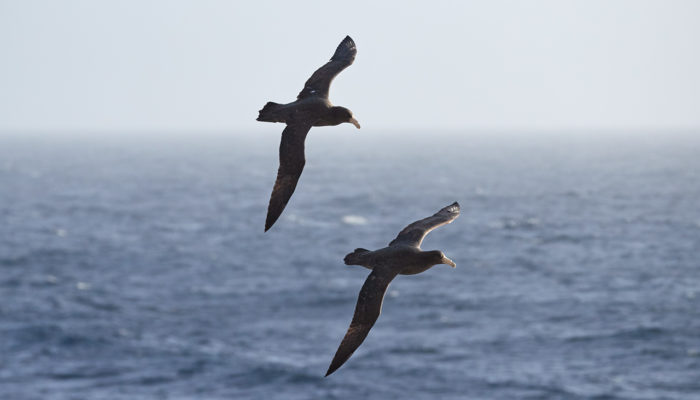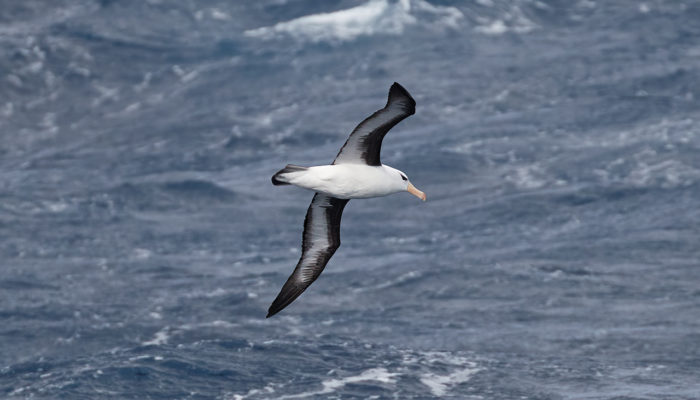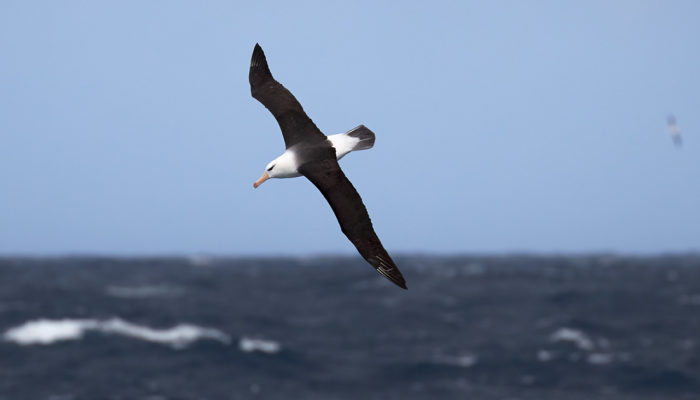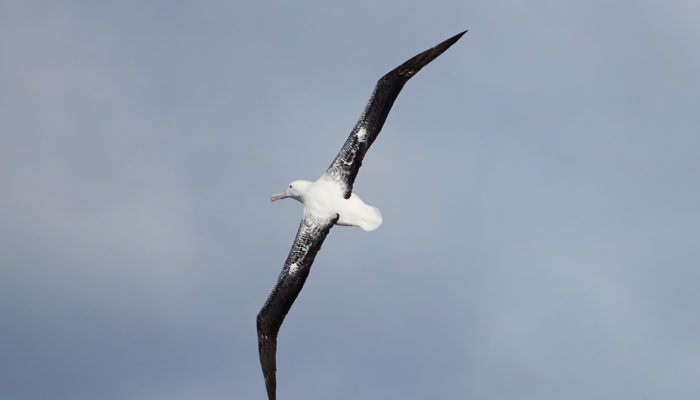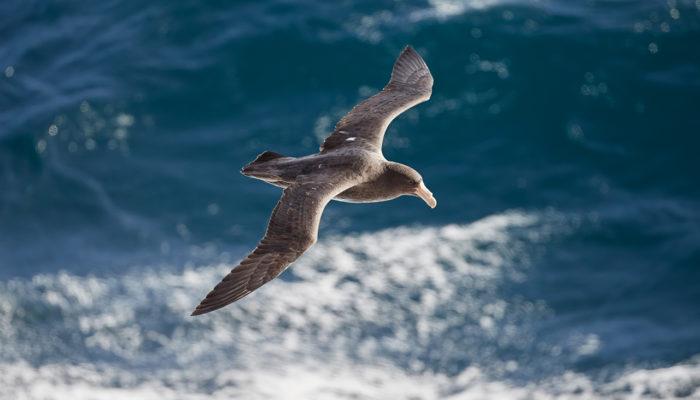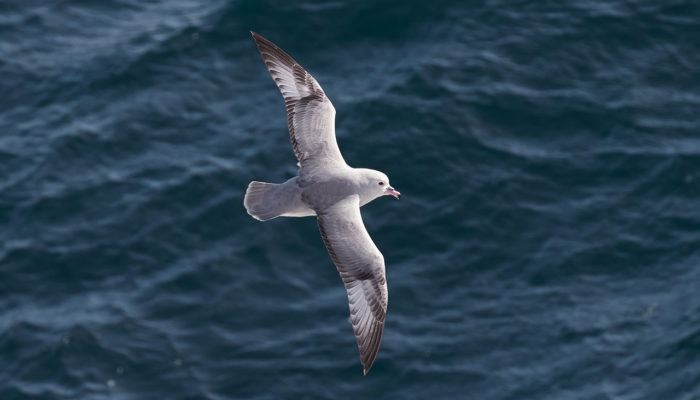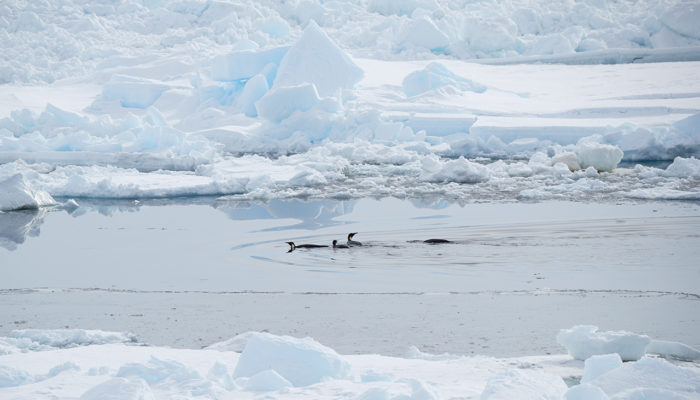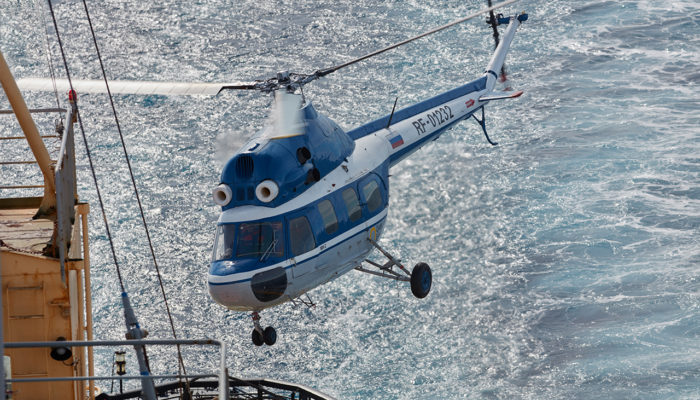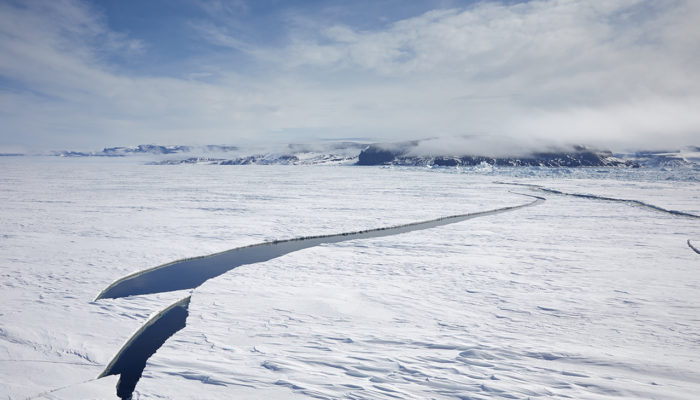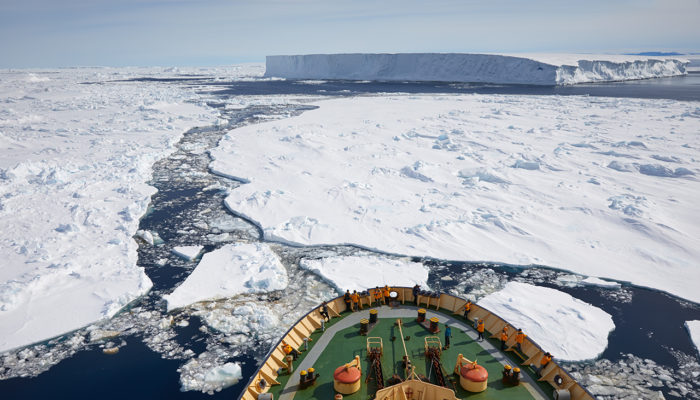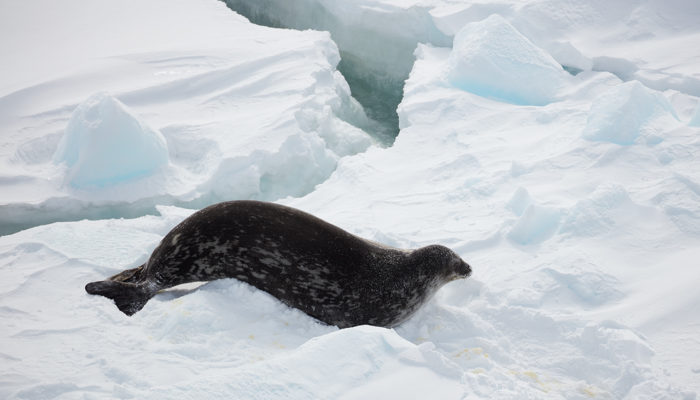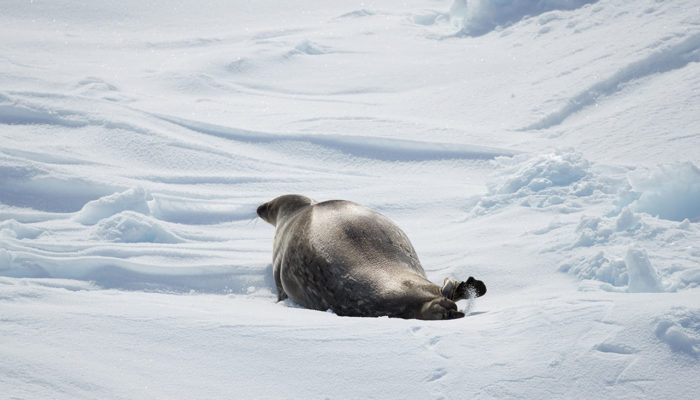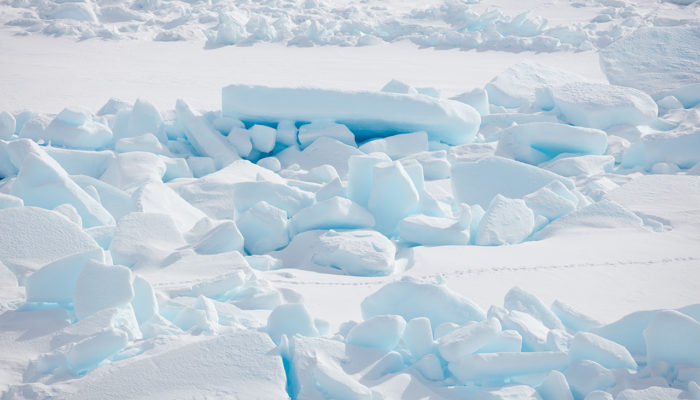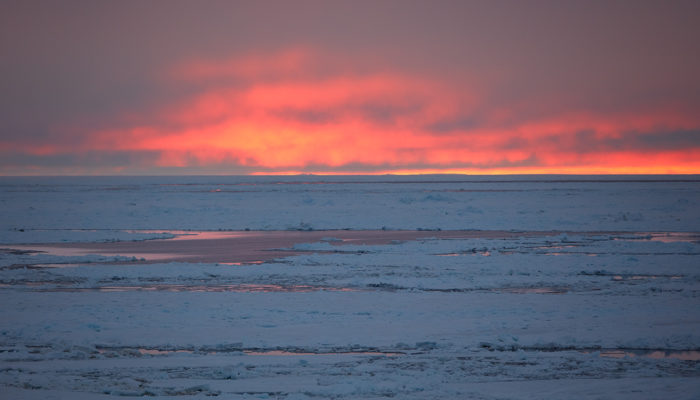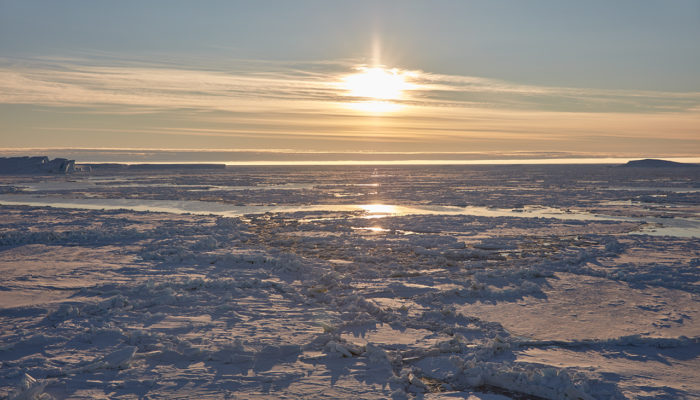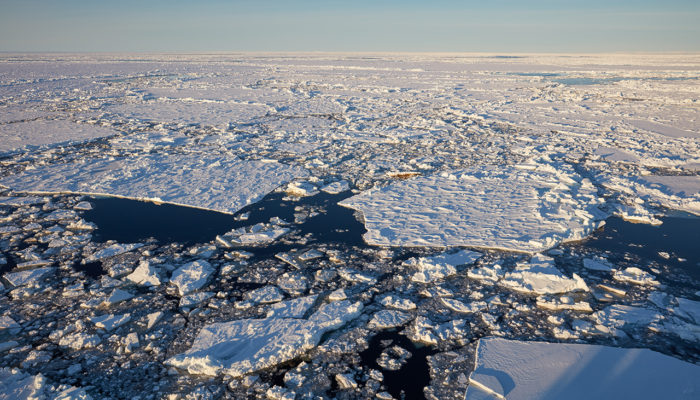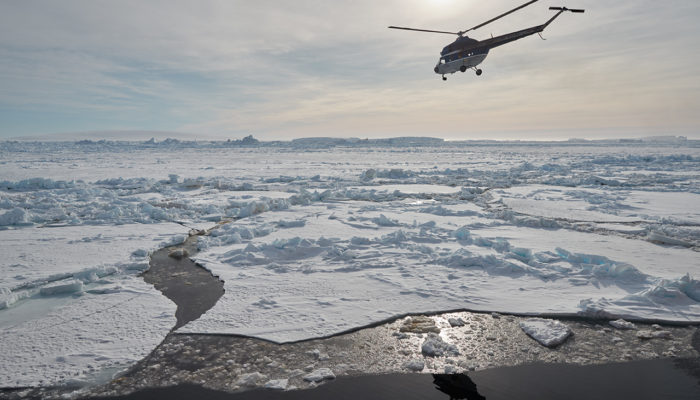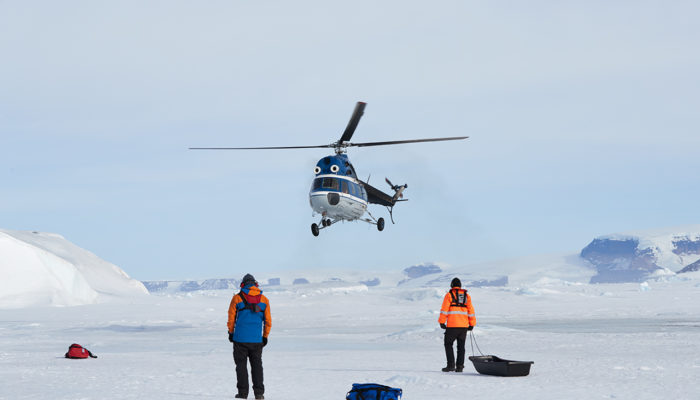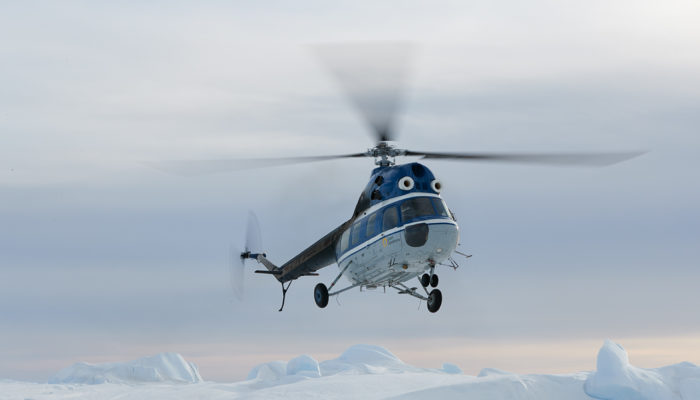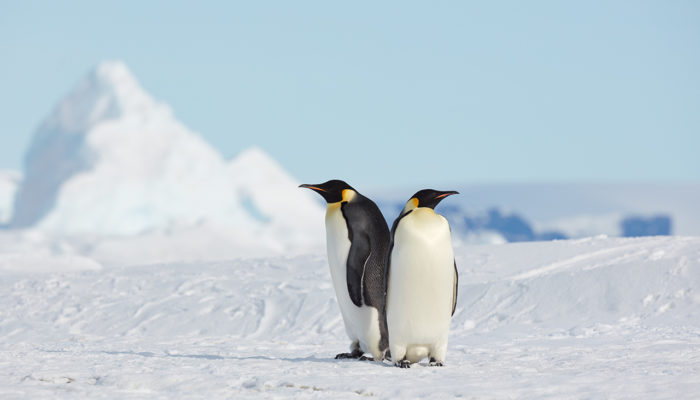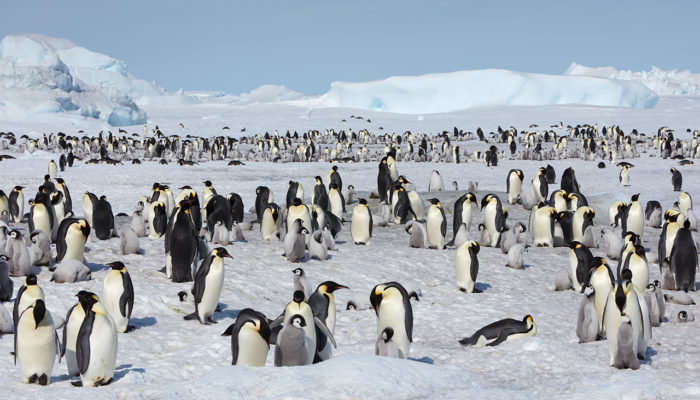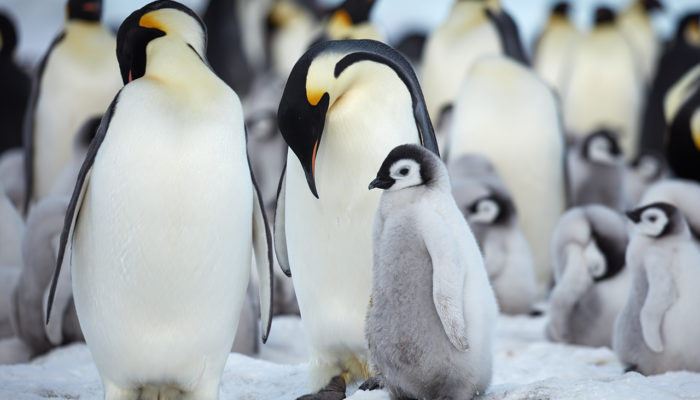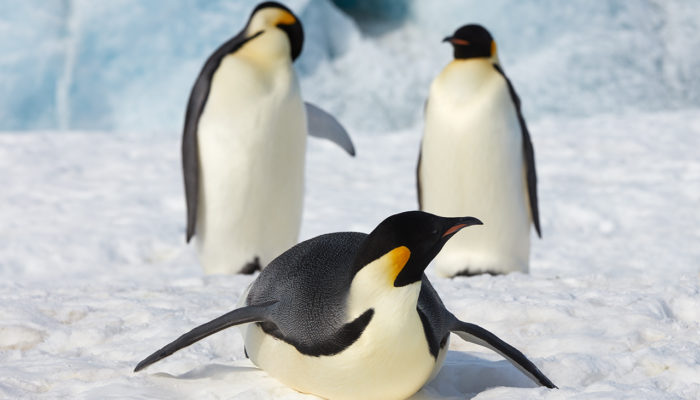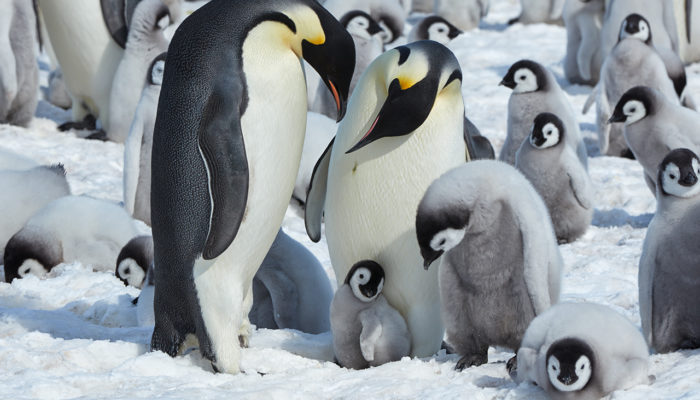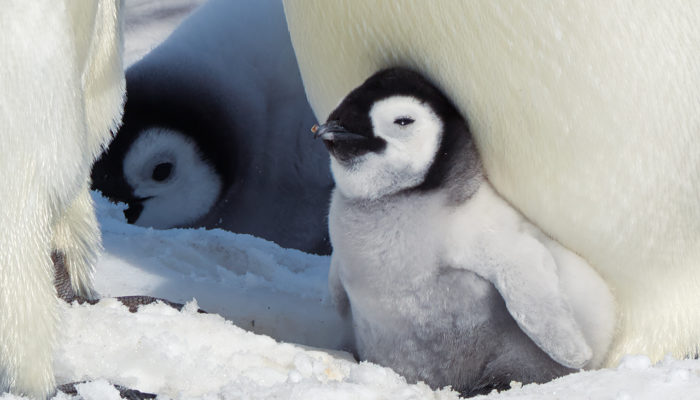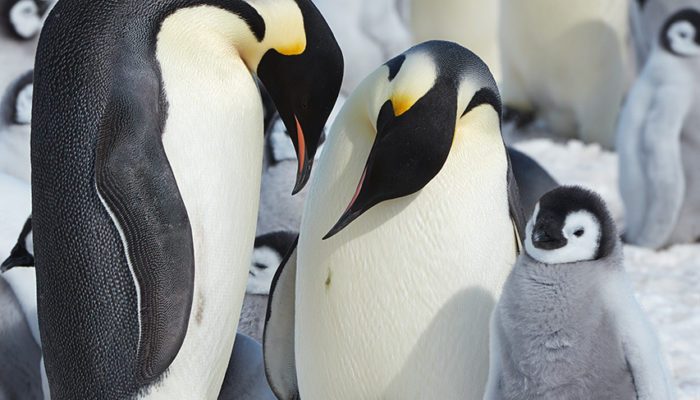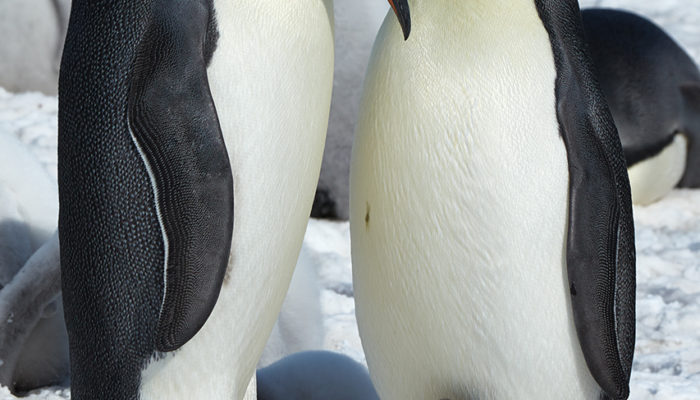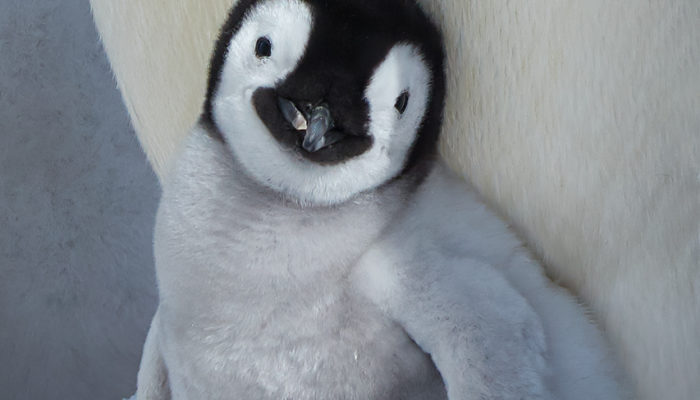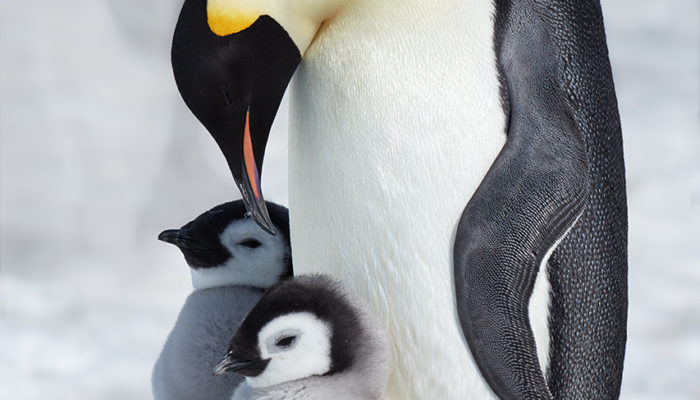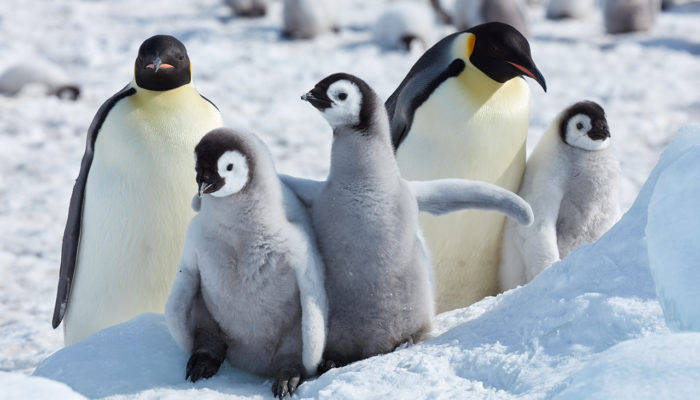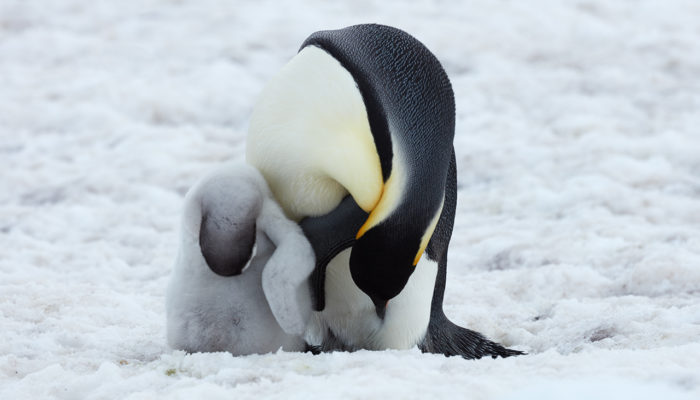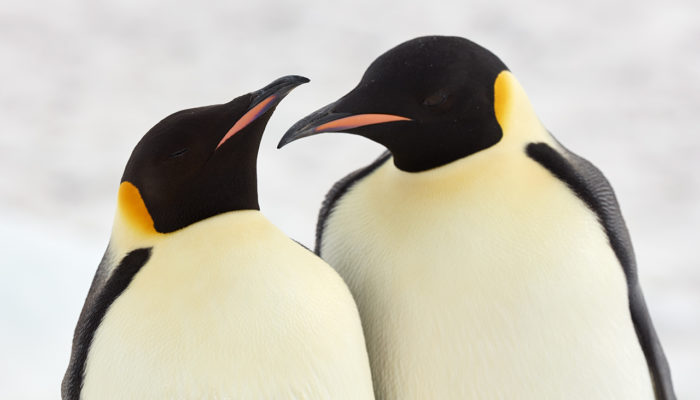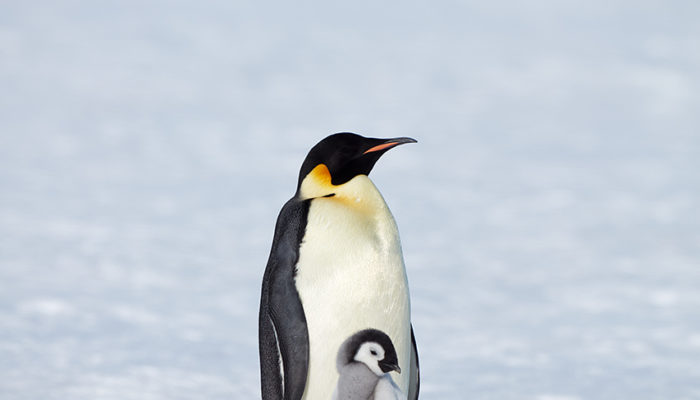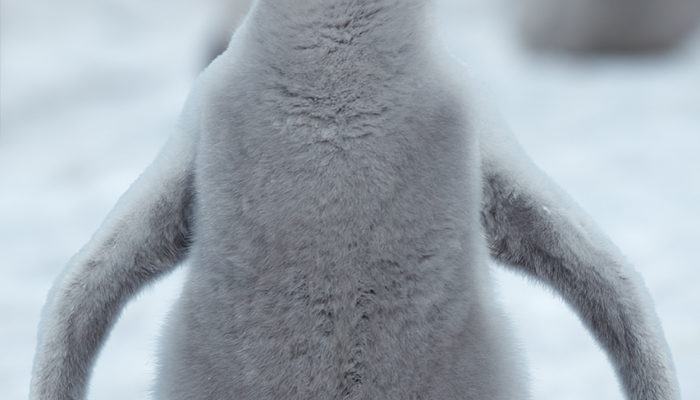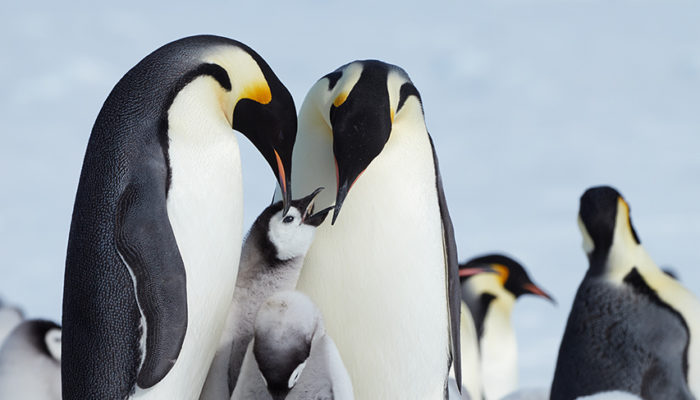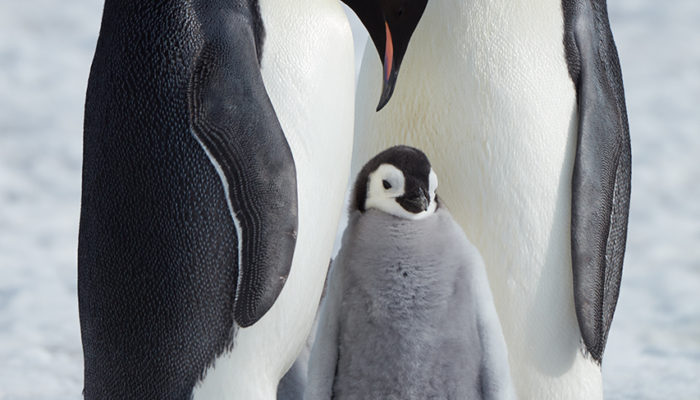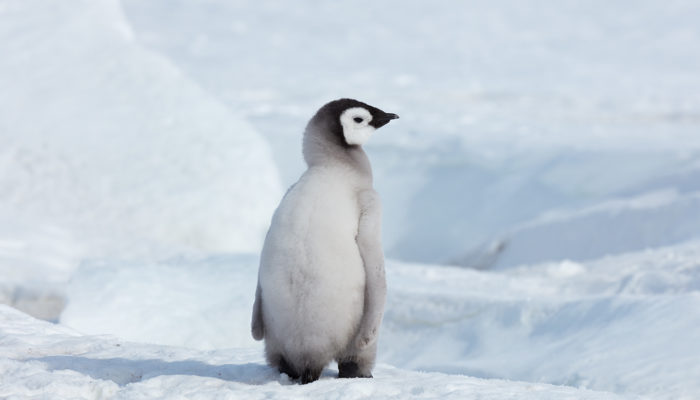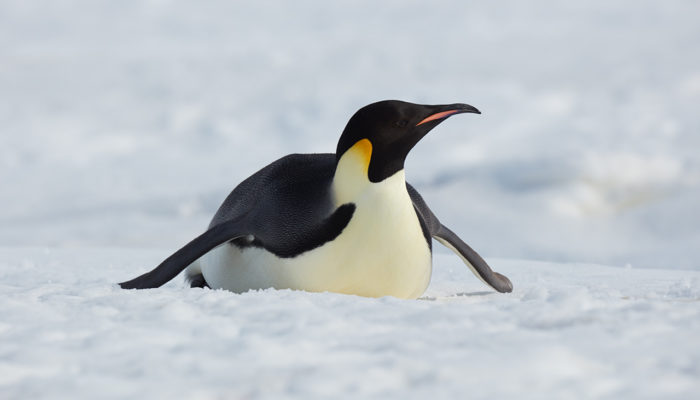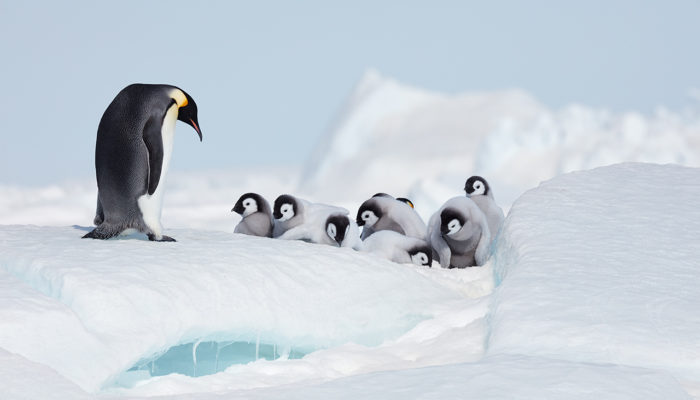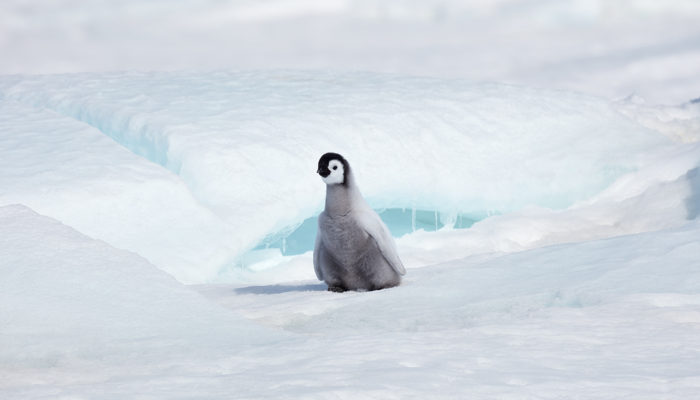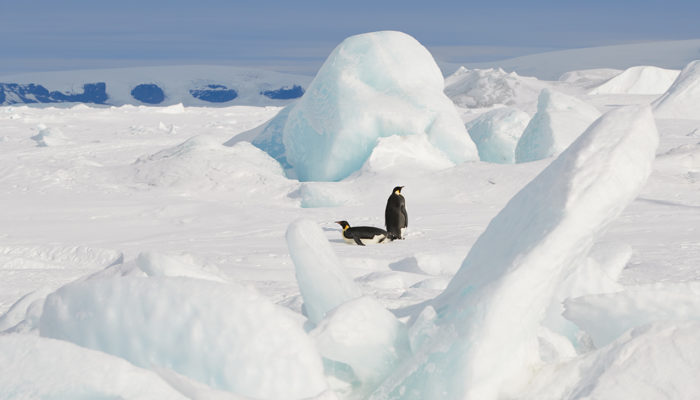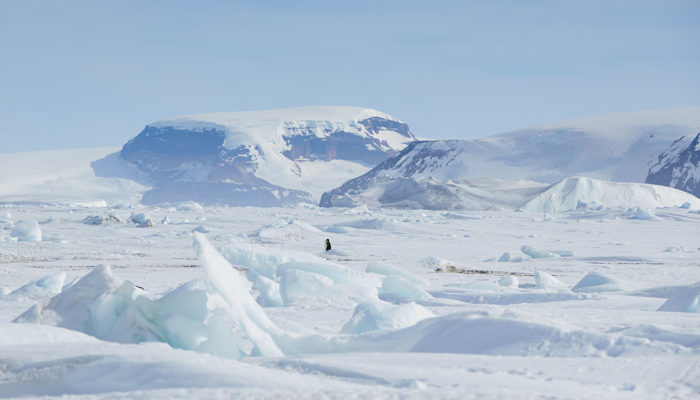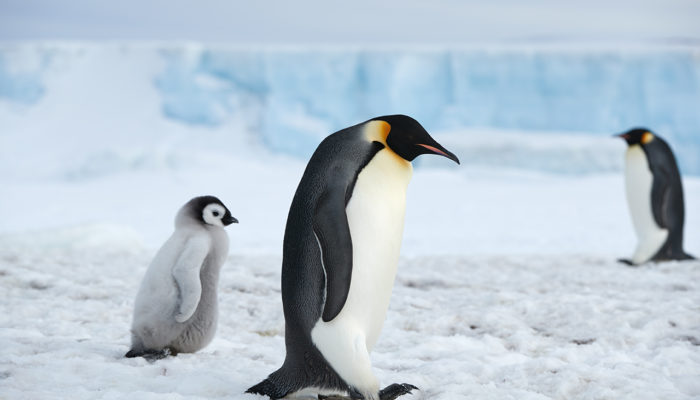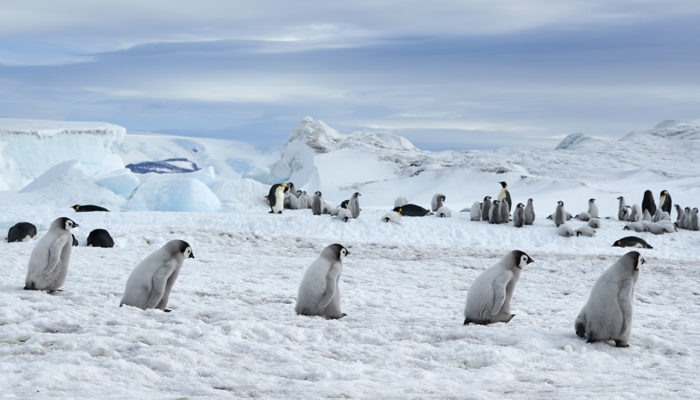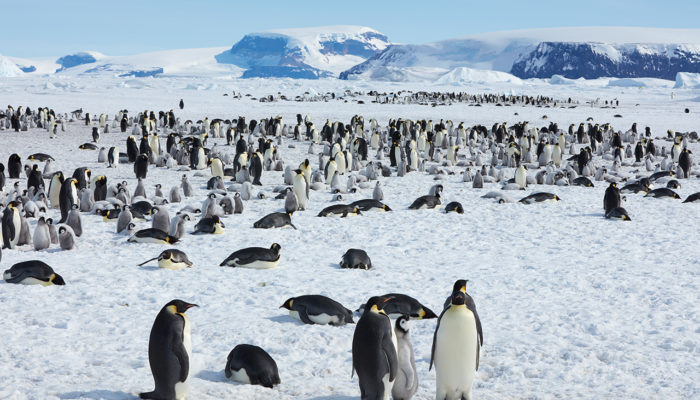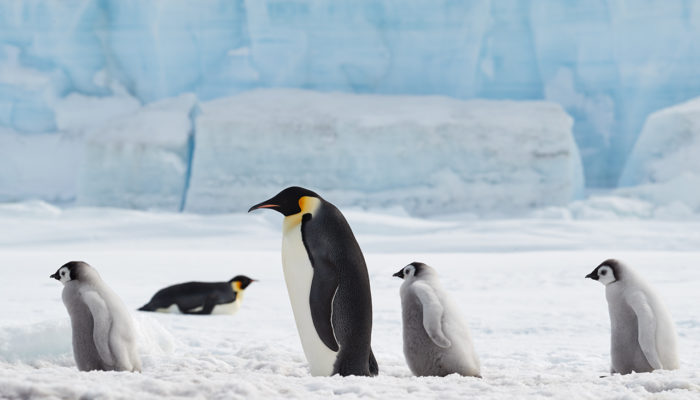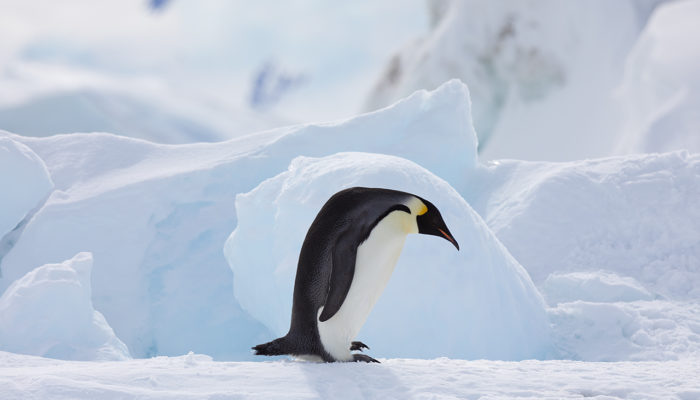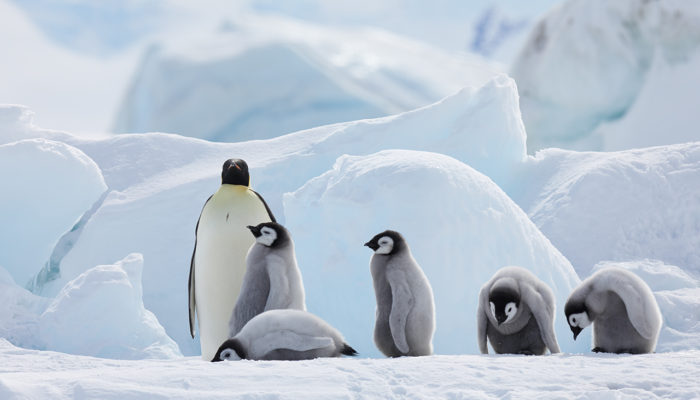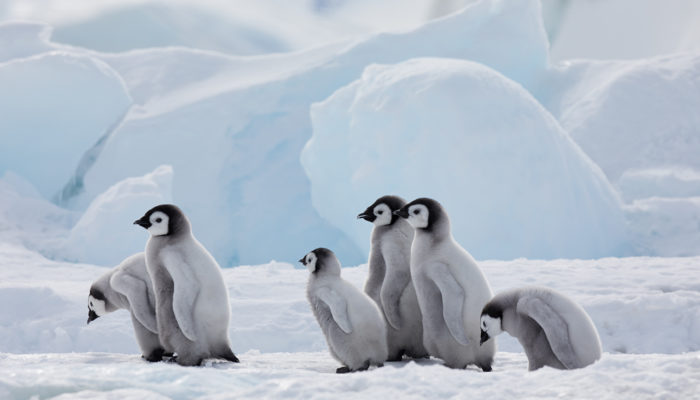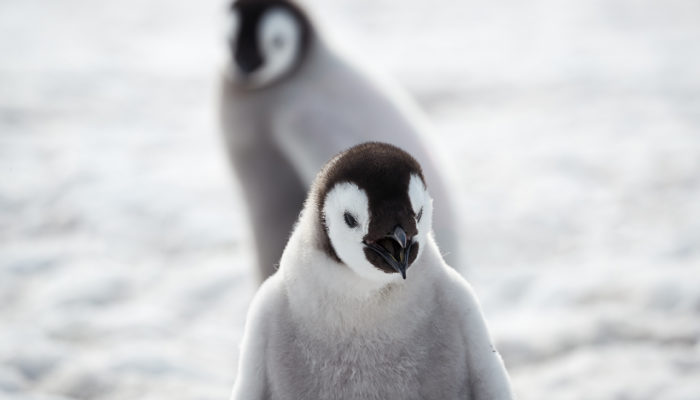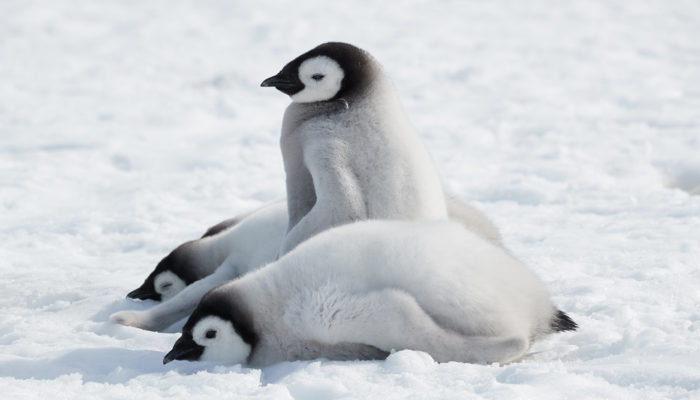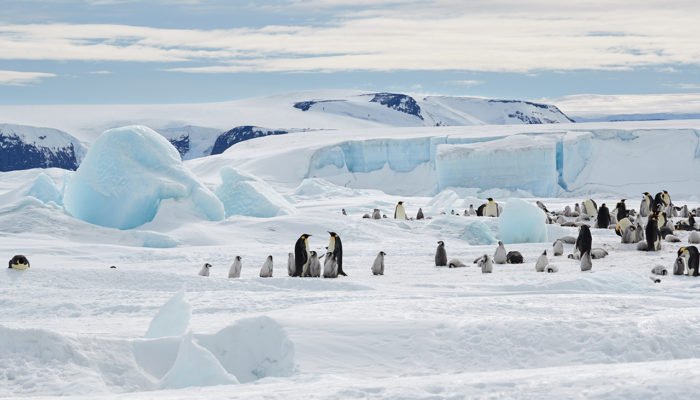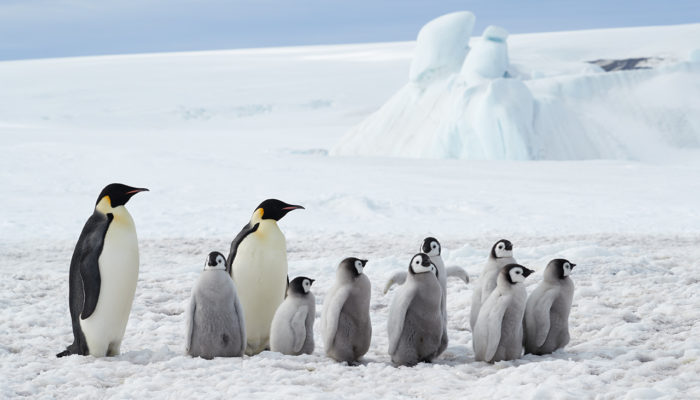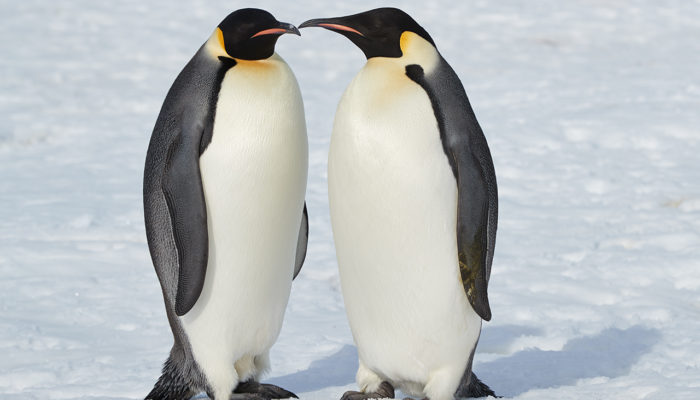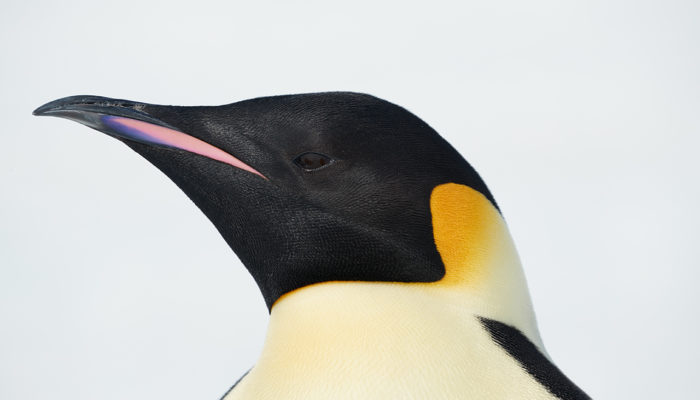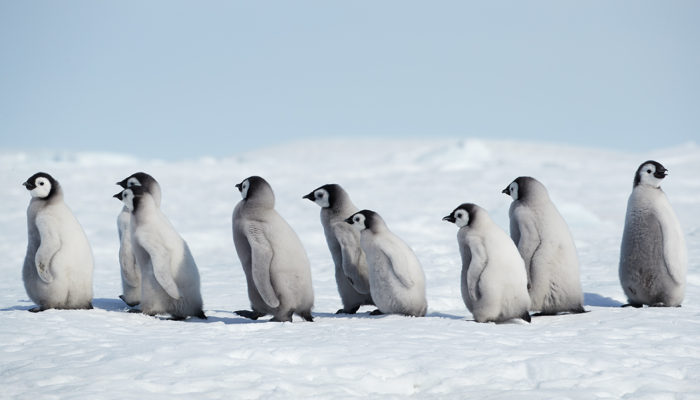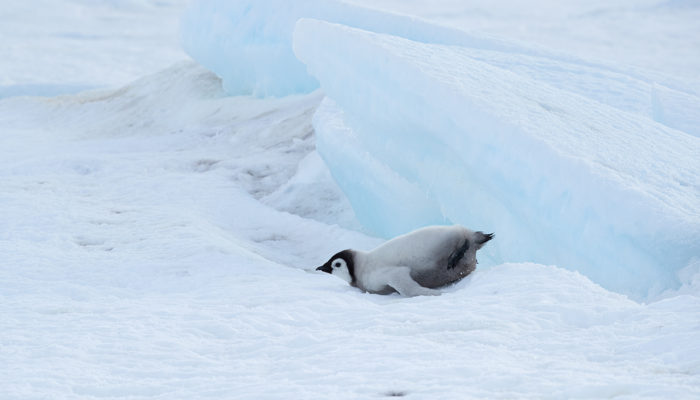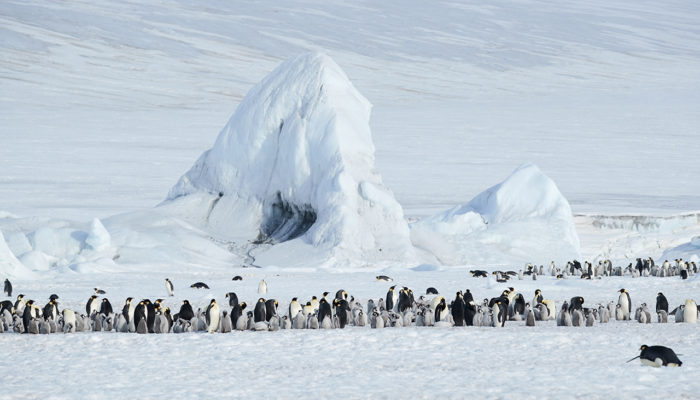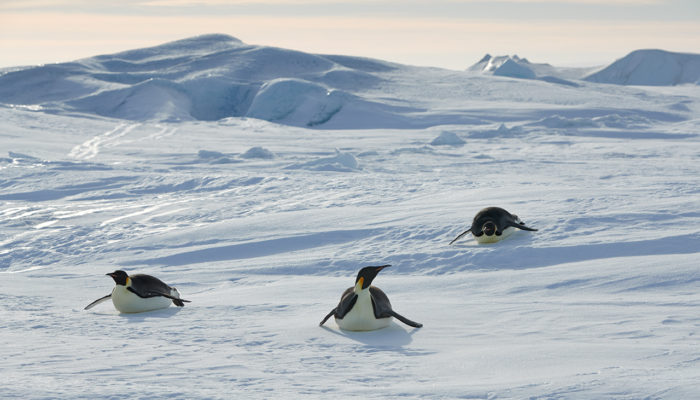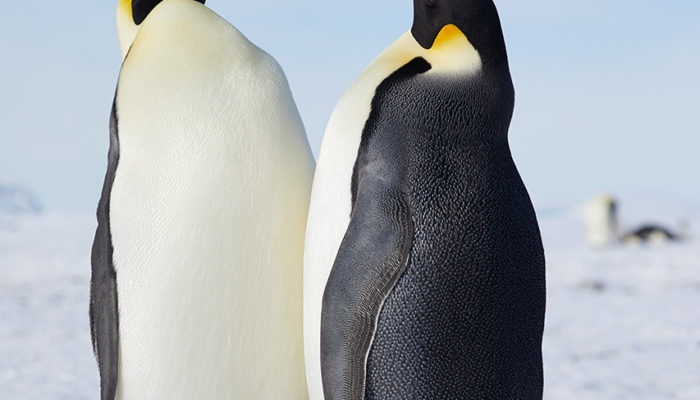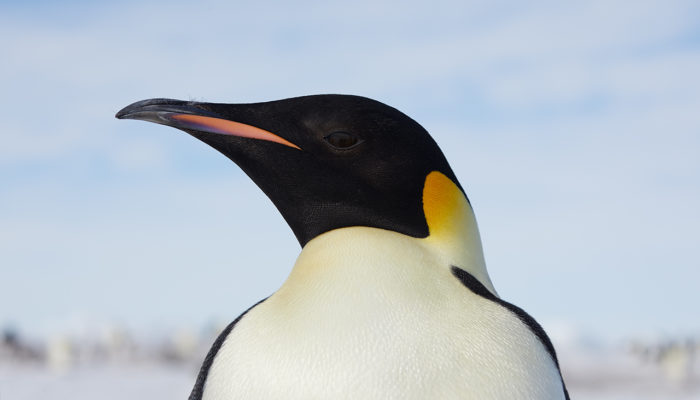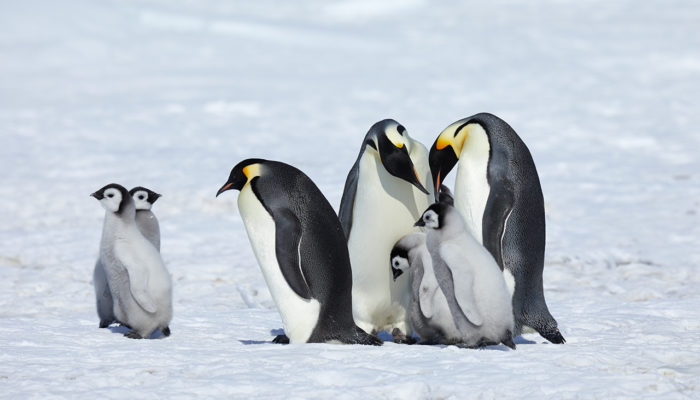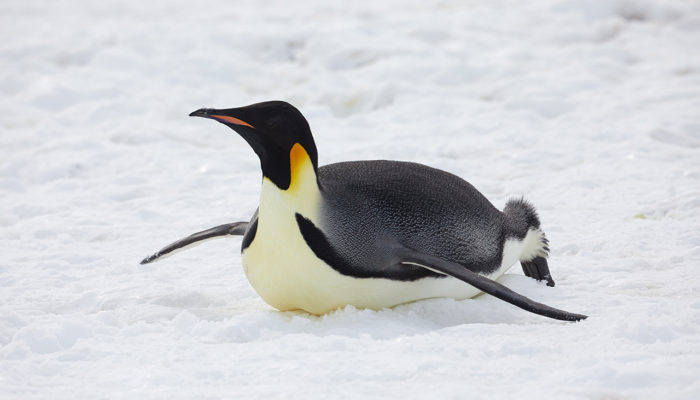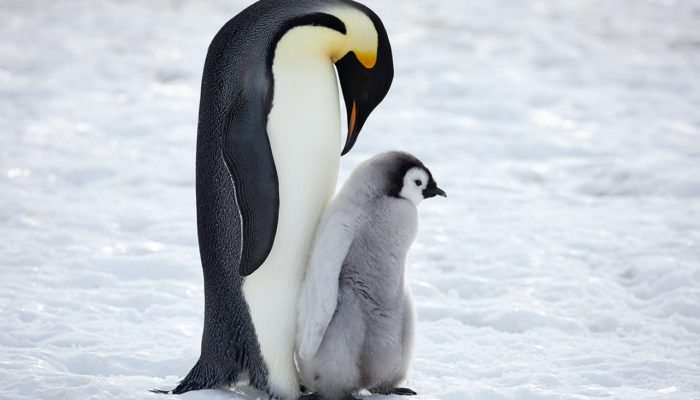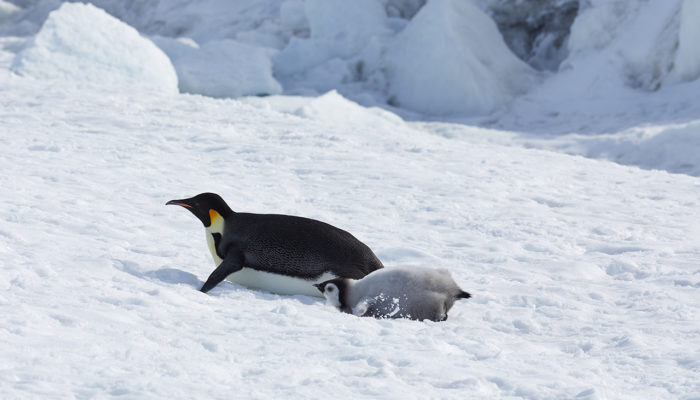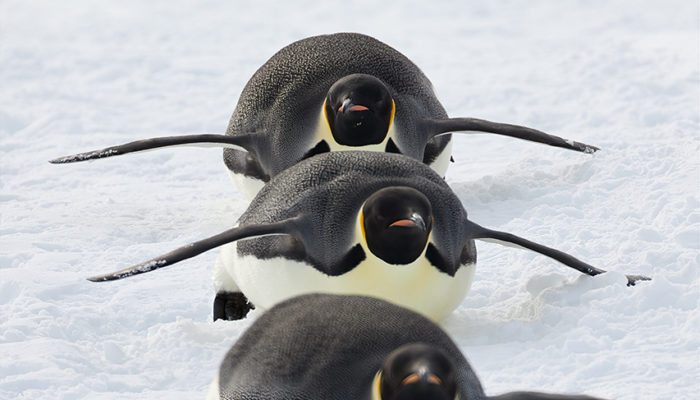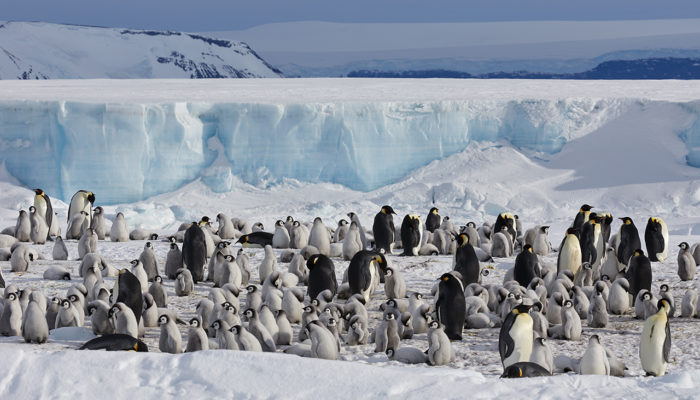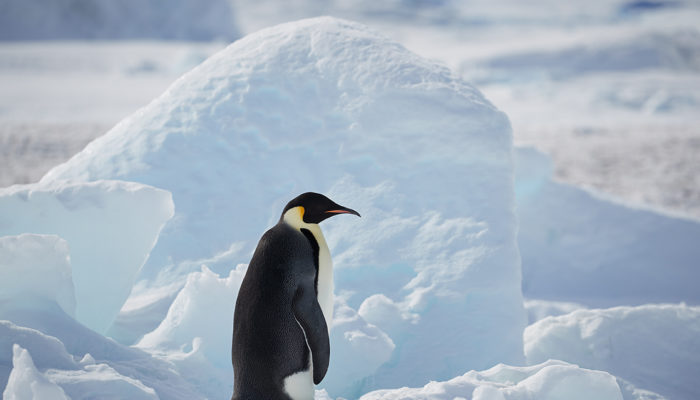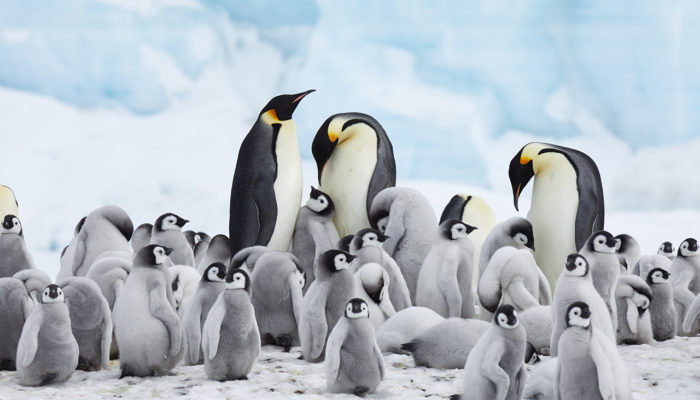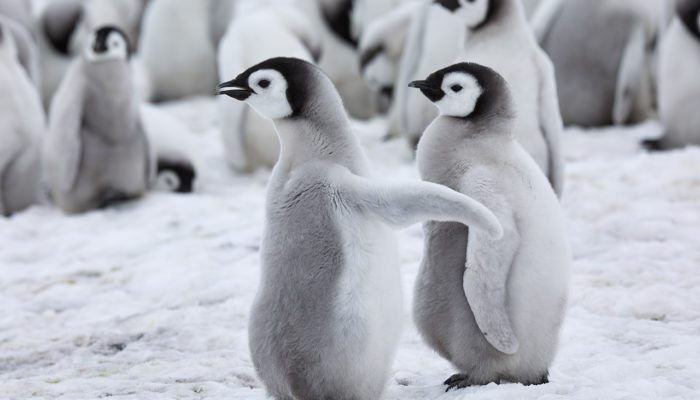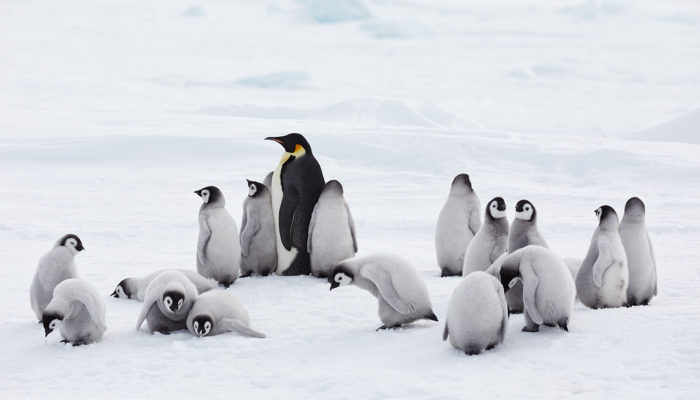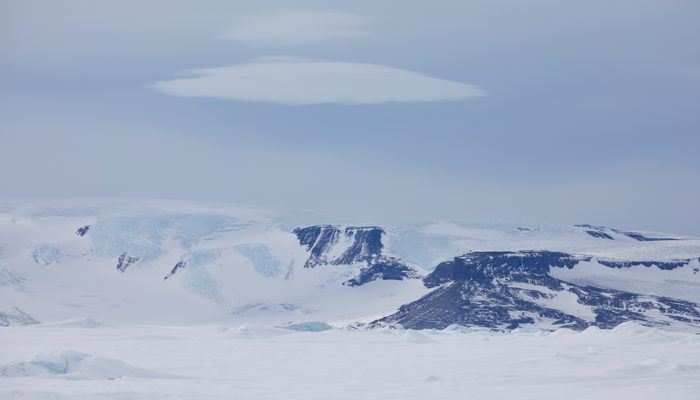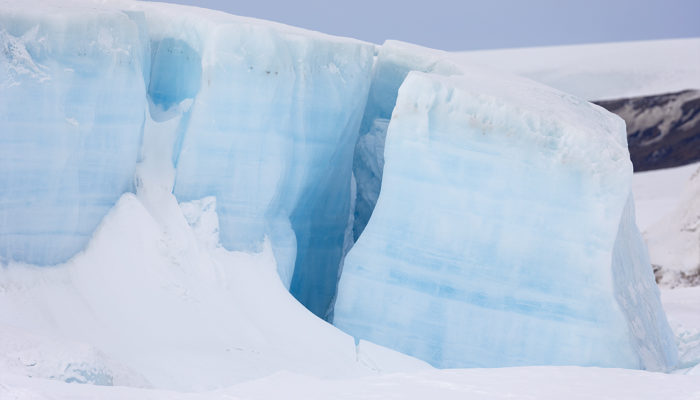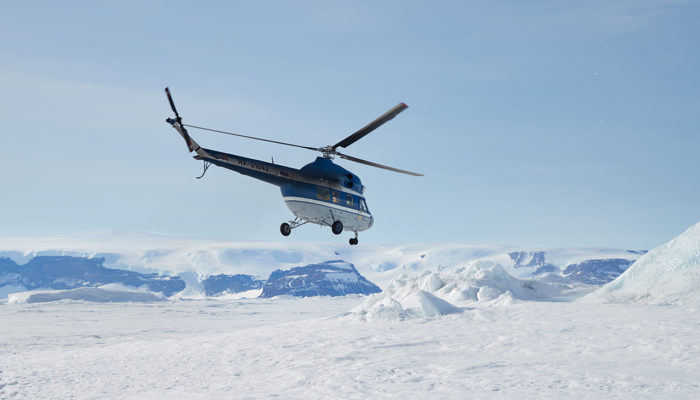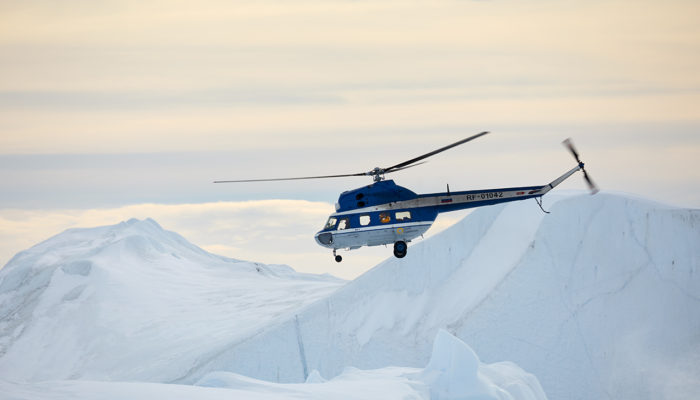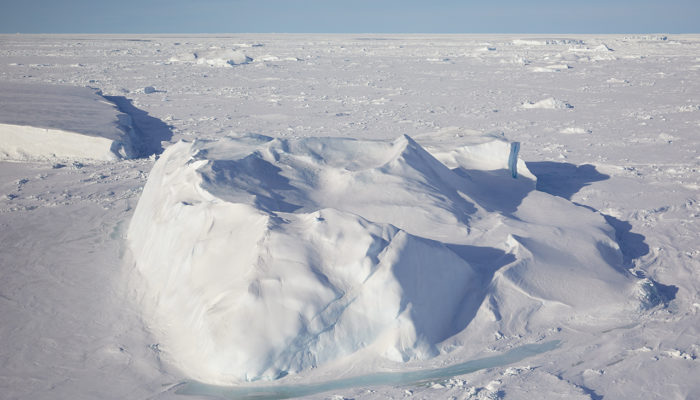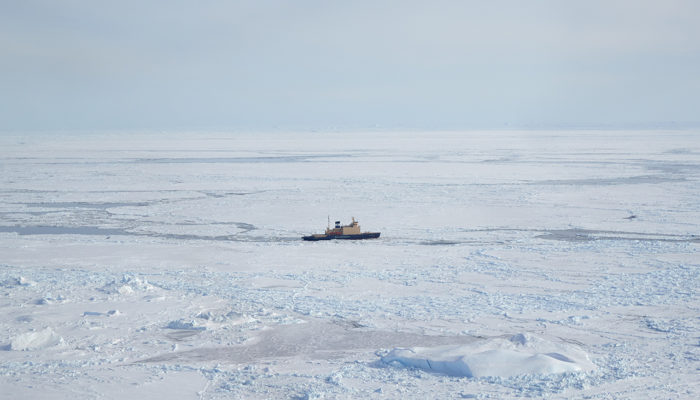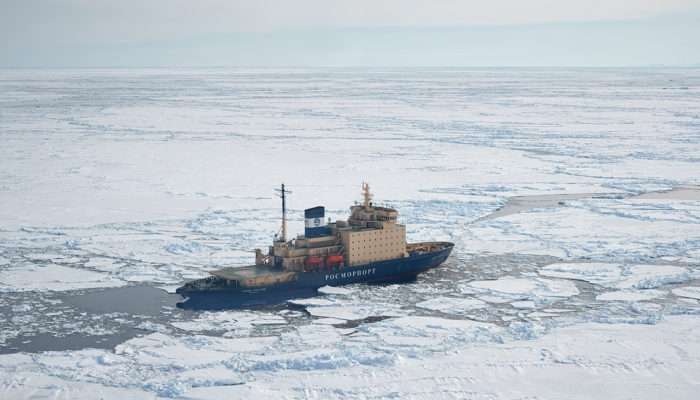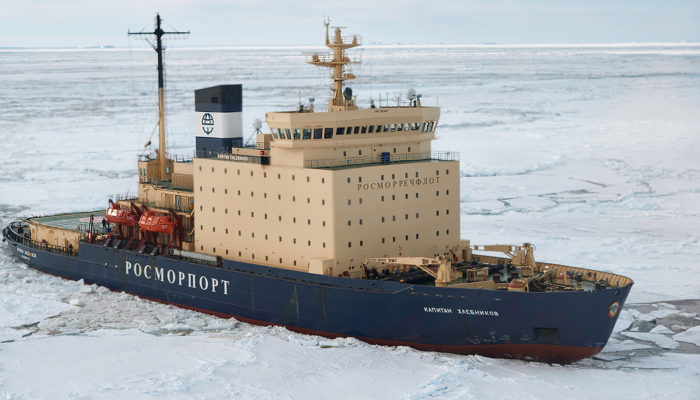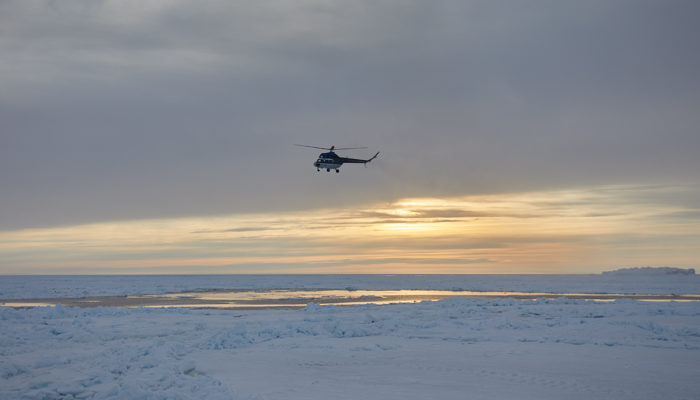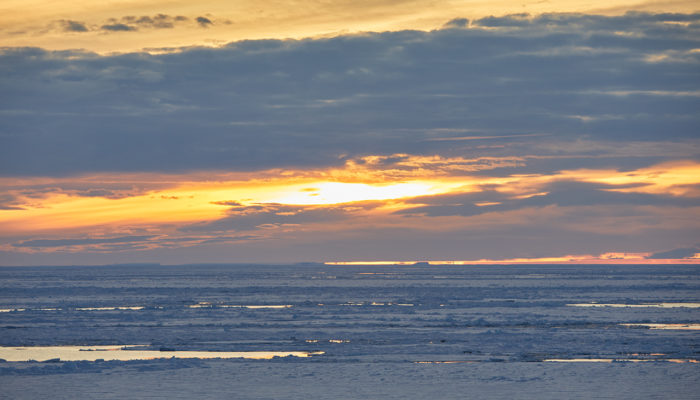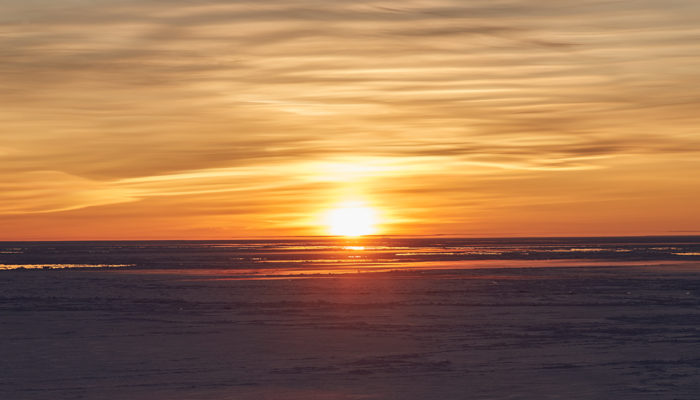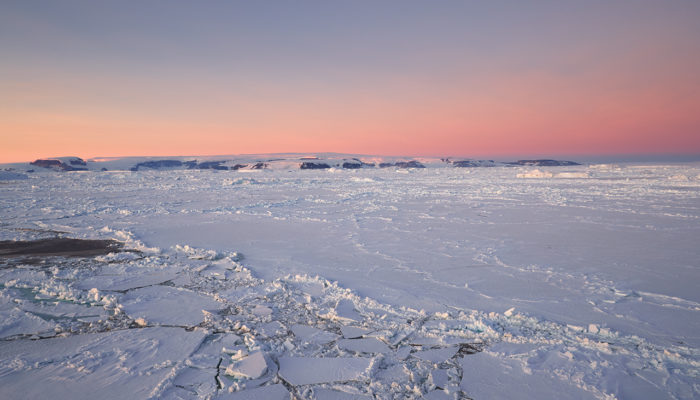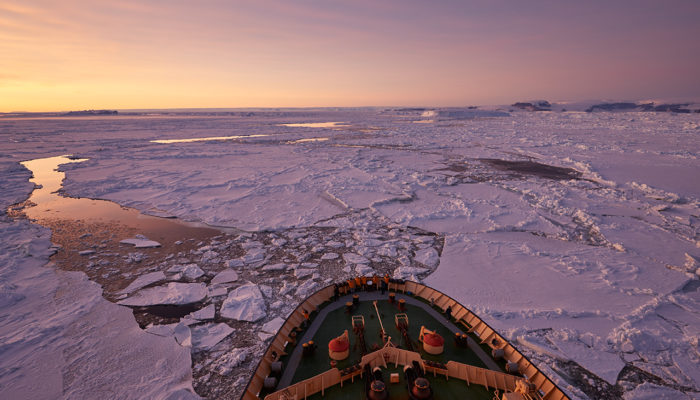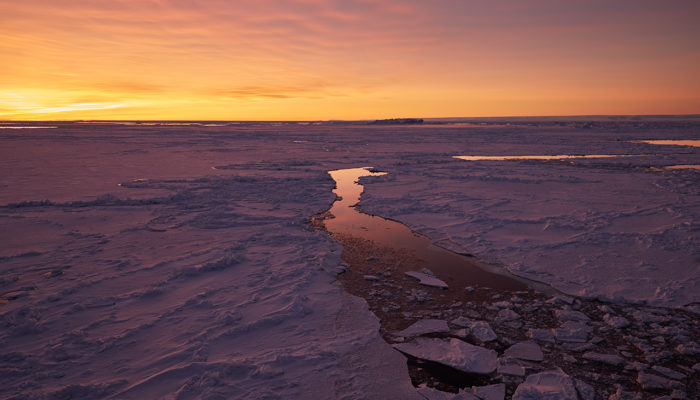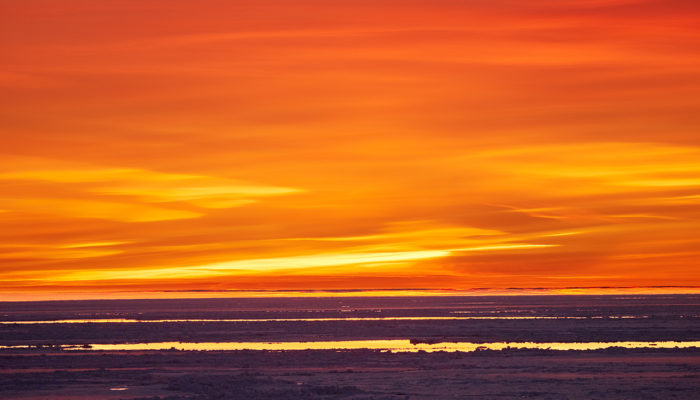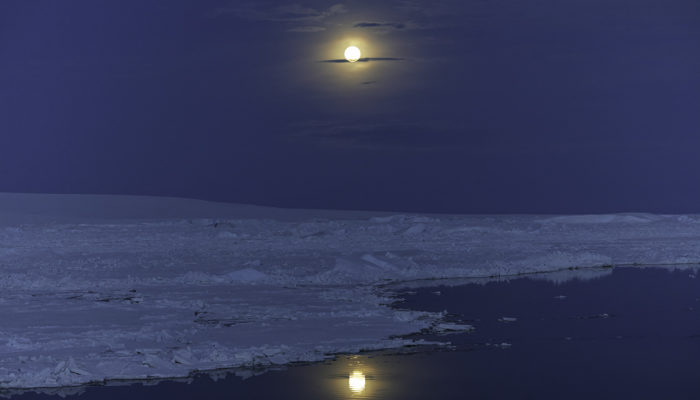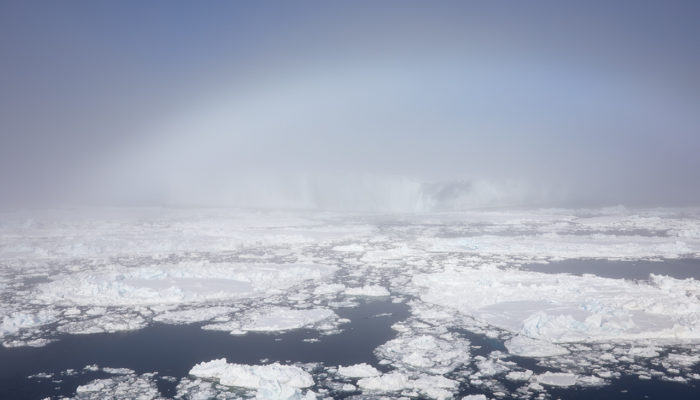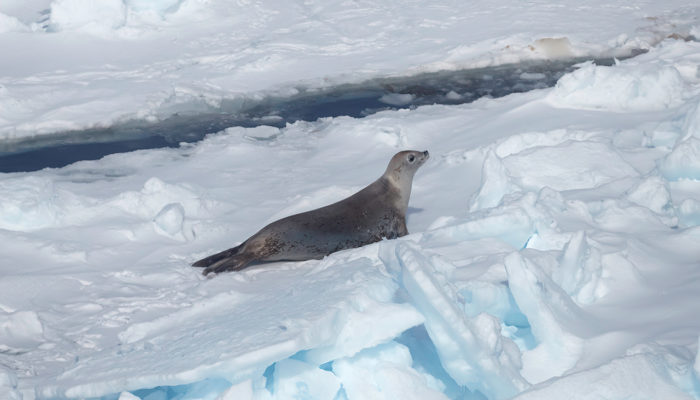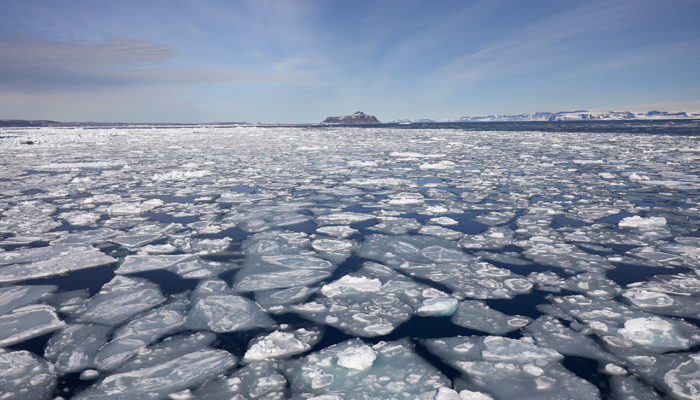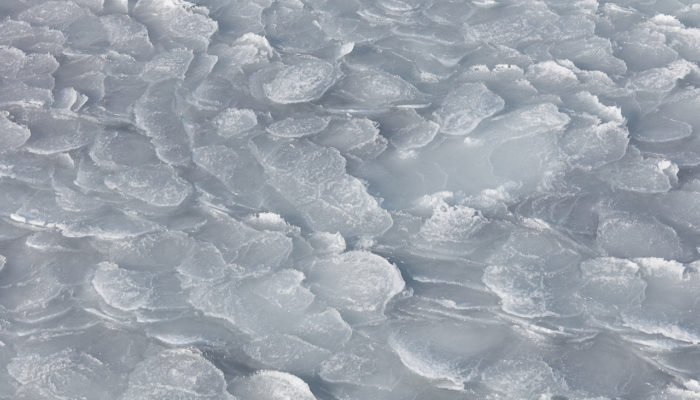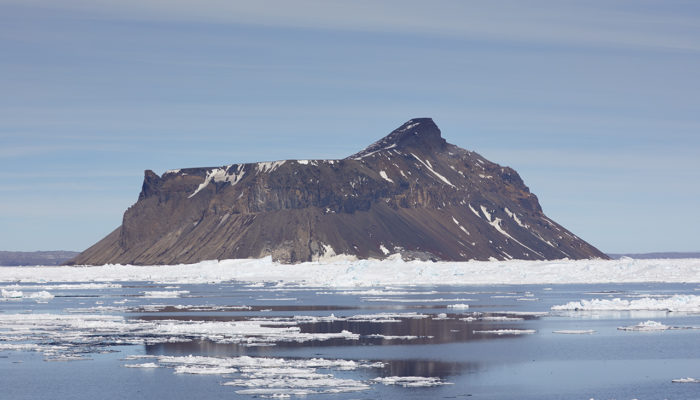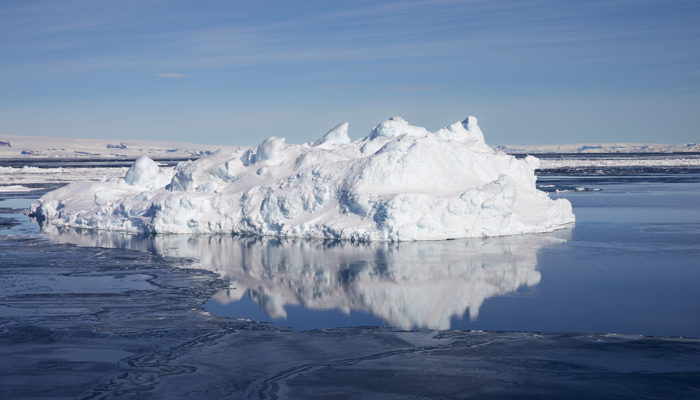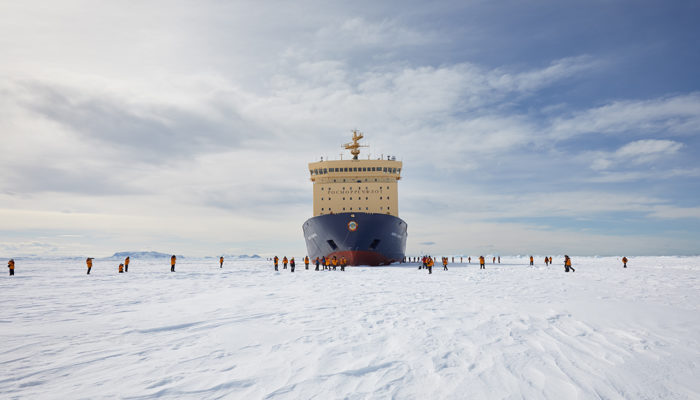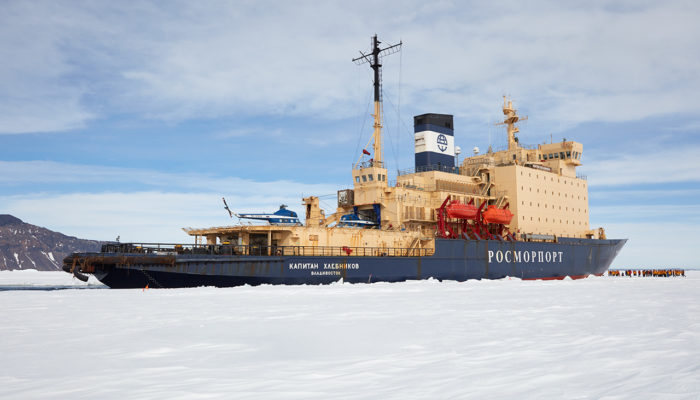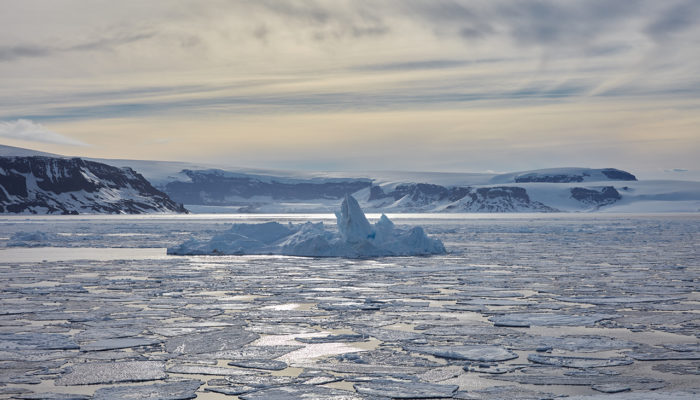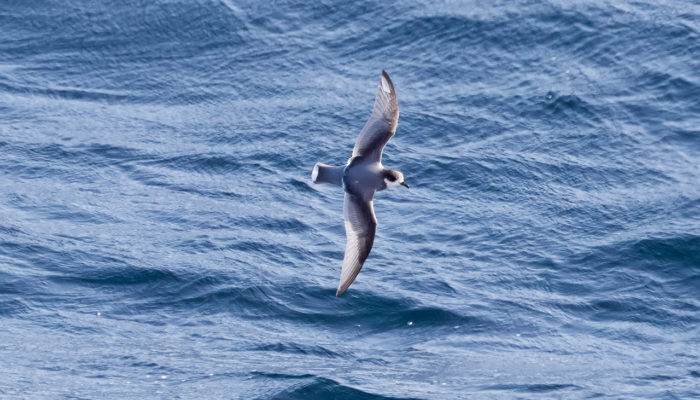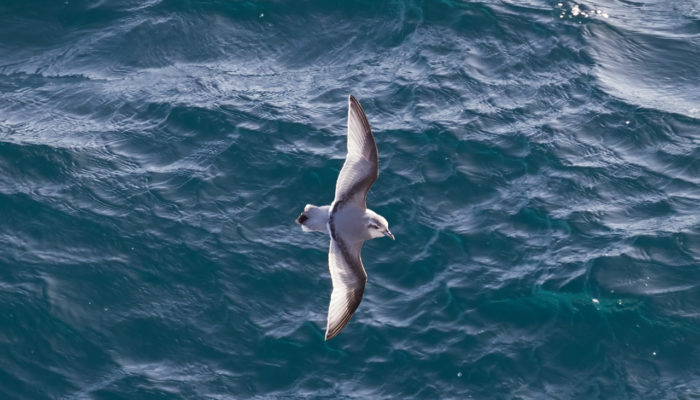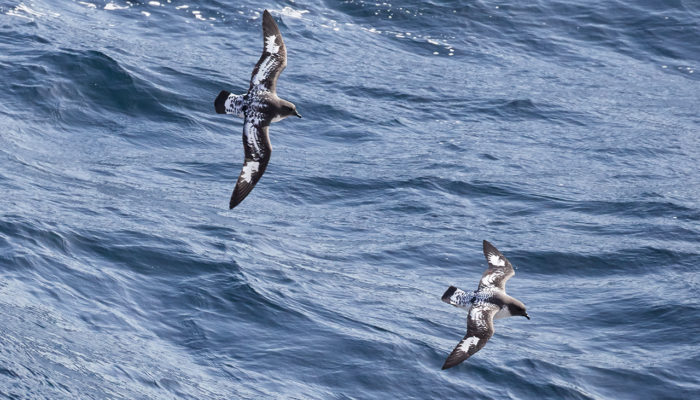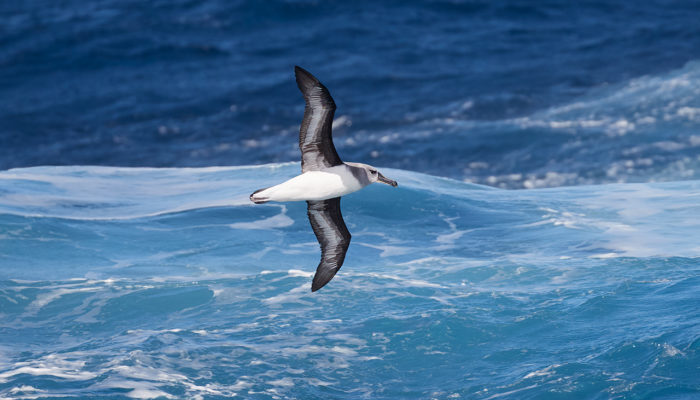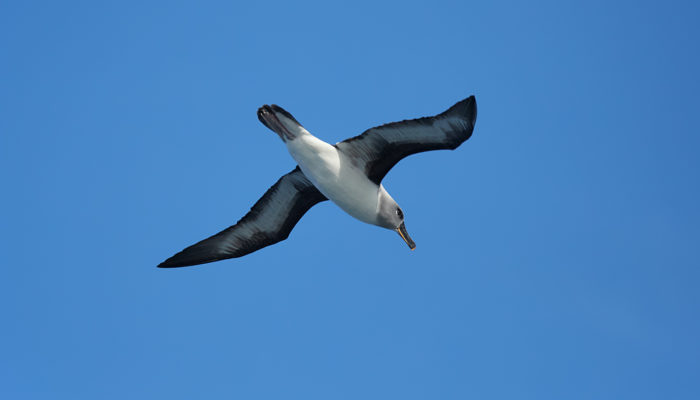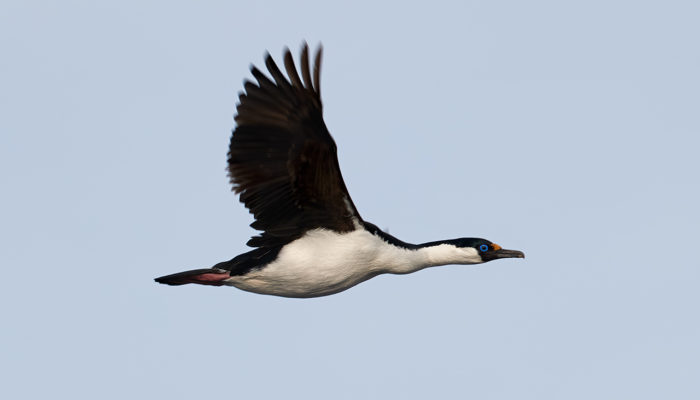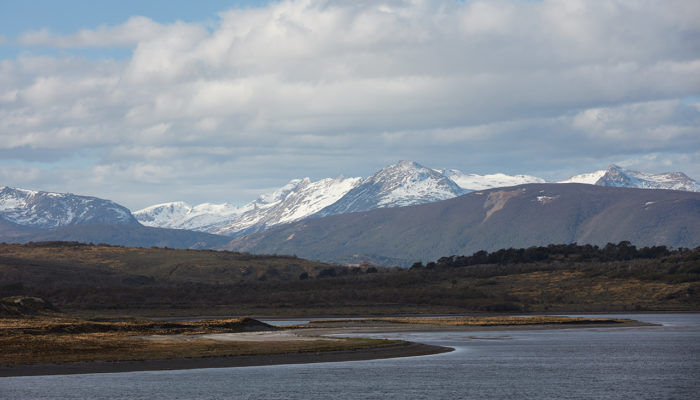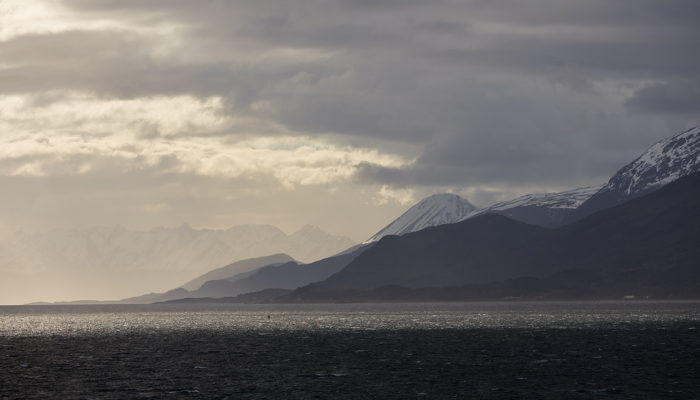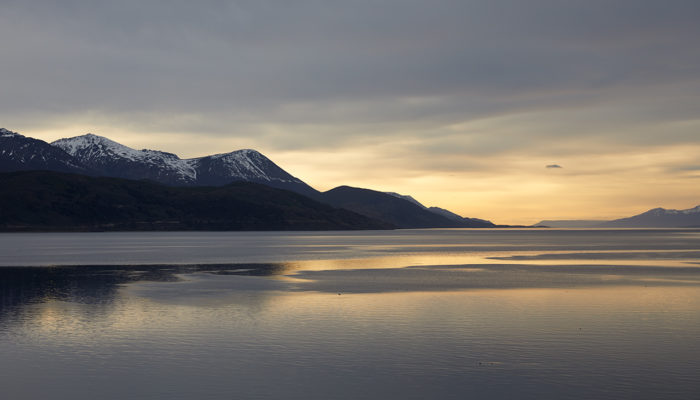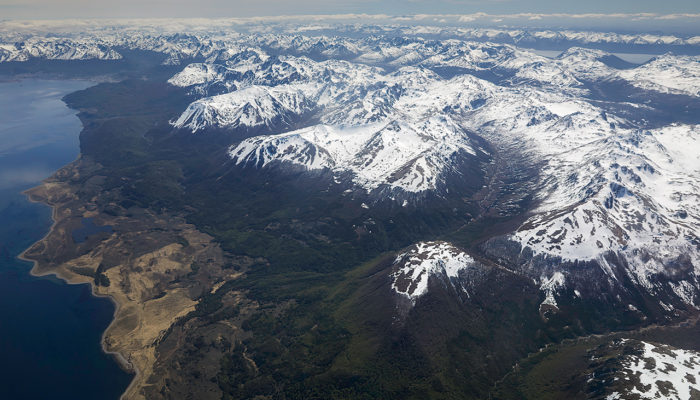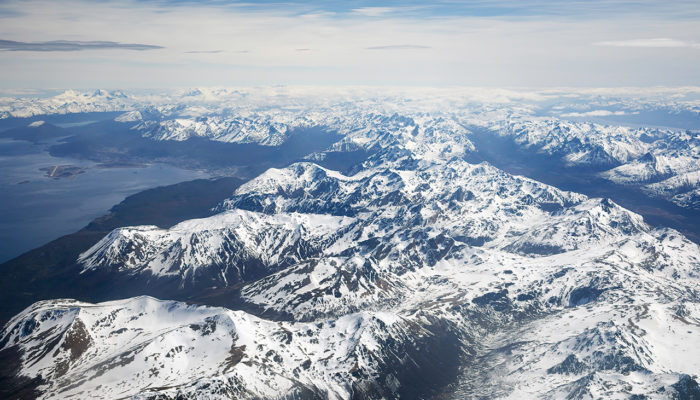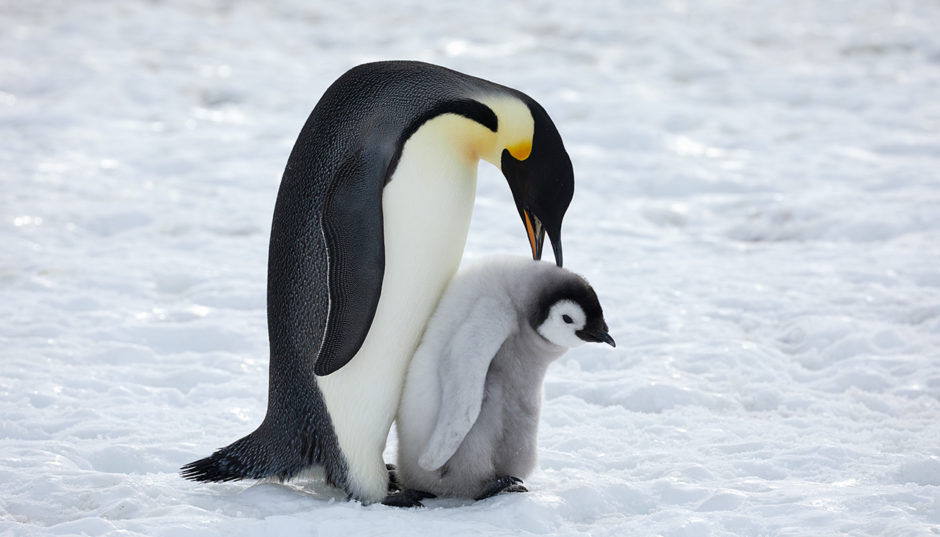
The Emperor Penguins need reliable patches of sea-ice on which to breed, and this icy platform must persist from March/April,when the birds arrive, until December, when their chicks fledge. If the sea-ice breaks up too early, the young birds will not have the right plumage to start swimming. In 2016 thousands of Emperor Penguin chicks drowned when the sea-ice on the edge of the Brunt Ice Shelf on which they were being raised was destroyed in severe weather. That happened again in 2017 and 2018. In consequence the world’s second- largest Emperor Penguin colony has nearly disappeared. Many other colonies are threatened by the combination of global warming and damaging storms resulting in less stable sea ice around the Antarctic continent.
The existence of a colony off the coast of Snow Hill Island was first confirmed in 1997 and was a real sensation because it is the northernmost breeding population and located near the northern tip of the Antarctic Peninsula. Most colonies are scattered around the Antarctic continent and situated on the fast-ice that is locked between islands or grounded icebergs and therefore impossible to reach by ship. In terms of distance, Snow Hill basically could be reached from Ushuaia at the southern end of South America. However, regular expedition ships never can go there because of the thick pack ice in the Weddell Sea. Only special icebreakers equipped with helicopters occasionally happened to get to the island before 2010. However, since that time those icebreakers are not allowed to travel to Antarctica anymore because of heavy fuel oil restrictions. That’s why there was no possibility to visit the rookery on Snow Hill Island for the past 8 years.
For a long time, I have been dreaming of seeing and photographing the legendary Emperor Penguins and tiny chicks and have been additionally inspired and touched by the award-winning documentary “The march of the Penguins”. But due to the cancellation of all icebreaker trips to Antarctica, I had given up hope that there still would be a chance for this great wish to come true any time in the foreseeable future.That’s why I was extremely excited when I surprisingly got the notification that the polar-class Russian icebreaker Kapitan Khlebnikov, equipped with helicopters to access the Snow Hill rookery, would travel to Antarctica for the first time in eight years in October 2018. Knowing that this was a unique chance, I decided to join this spectacular expedition though the costs caused considerable headache resulting in the need to book a Triple cabin and my wife staying back, unfortunately.
At arrival in Ushuaia and on the next 2 days there, the weather was beautiful with blue skies and nearly no clouds in this often rainy and stormy region.That’s why we decided to take a helicopter flight around the city and over the Andes mountain range nearby which simply was amazing.
On the late afternoon of the second day at Ushuaia our group boarded the iconic Icebreaker Kapitan Khlebnikov and in the beautiful evening light, we set sail through the historic Beagle Channel, named after the famous ship Charles Darwin voyaged. On the following days and nights we had to cross the famous Drake Passage towards the Weddell Sea. Most of the time the conditions on the passage were pretty rough with winds in excess of 110 km/h (70mph) and wave height around 6-7,5m (20-25 foot). Icebreakers do not have a keel and thus roll significantly in all but very calm seas. The biggest roll was +/- 35 degrees in a period of 11 seconds and most fellow travellers stayed in their cabins. To circumnavigate even worse conditions, the captain chose a zigzag course, partly going northeast and actually sailing away from Antarctica by then. In the end it took us 3 full days to cross the Drake and we got into the sea ice two days behind schedule.
 |
 |
For larger views click on the links below:
https://www.wjaekel-foto.de/wp-content/uploads/2019/06/Snow-Hill_Context-map_Drake-Passage1-1.jpg
https://www.wjaekel-foto.de/wp-content/uploads/2019/06/Snow-Hill_Local-detail_1.jpg
When we were around 20 miles away from Snow Hill, it seemed that we were hopelessly stuck in the ice as the captain maneuvered the ship forward and back for a long time without progress. This proved again that even a powerful icebreaker cannot guarantee to get close enough to the island. Beyond that, if the winds are too high or there is fog, the helicopters cannot fly. Even if the weather conditions stay favorable we faced the situation that only half of the 100 passengers could get to the colony each day if we could not get closer. However, after they had sent out a helicopter to explore the ice coverage and possible routes, the captain made good progress in navigating closer to the island and had gotten us within 6 miles of the prospective Snow Hill Base camp. Everyone was relieved as we were well within helicopter range.
On the following days the helicopter operation was perfectly organized and the flight time to the Base Camp was just around 7 minutes. From there, a 1,5km long flagged track directed us to the colony. The walk across the thick sea ice was rather easy but everybody had to carry his equipment and most everyone was over-dressed and sweating given the astonishingly warm temperatures of around -4° Celcius (25 degrees Fahrenheit) and even higher degrees on the next two days – quite unusual in this region considering that the temperature was down to -25° Celcius there two weeks ago. On the track we encountered the first adult penguins at close distance that were completely accepting our presence – simply amazing.
To witness the Emperor Penguin colony of around 4000 birds was a unique and unforgettable experience and definitely one of the greatest highlights of my travels for photography. Since our visit was early in the season the chicks were still young, huddling together in larger groups and with their parents, waddling around or begging the adult for food. Some fellow photographers happened to spot one or two late-born chicks in the colony still sitting on their parent’s feet and peeping out of the brood pouch. Unfortunately I missed this exceptional view. Though there were lots of birds in the wide-spread colonies it was difficult to photograph a single adult with its own chick because the birds were close together in the mass. Beyond that, the warm temperatures during our stays partly turned the snow at the colonies into a messy sludge additionally becoming dirty by bird poop, regurgitant and manifesting avian footprints everywhere. So it was a good idea to place the tripod past the edges of the colony and wait for birds passing by on the relatively clean snow. Since the penguins were not afraid of humans and quite curious they often walked right up too us though we had stayed in the required distance from the colony according to the guidelines. BTW, we had to wear sunglasses all the time in order to prevent snow blindness which sometimes made it cumbersome to judge the correct white balance due to the changing light conditions at the colonies.
In summary we could spent 3 full days at the colony of Emperor Penguins – leaving the Kapitan Khlebnikov by helicopters on the early mornings and returning on the late afternoons. As said, the weather was warm with little to no wind and mostly bright conditions on all days and thus perfect for photography.
The 3rd day at the colony was our last. Due to two big storms announced for the Drake the captain decided to leave Snow Hill to have more time for crossing the passage including potential changes of the course because we had to return to Ushuaia as scheduled. Nevertheless, we sailed along east Seymour Island through thick pack ice and parked the ship in fast ice off Cockburn Island in the afternoon. We could walk on the ice and take pictures of the Kapitan Khlebnikov.
Northbound through the Drake we indeed faced rough seas again and as expected, more extra time was required because of the rolling and another zigzag course. Towards the end of the passage, as the rolling and bumping became less prominent, we could take some flight shots of albatrosses, Giant Petrels and other birds around the ship. We arrived back in Ushaiua as planned and everybody was transferred by bus to the airport for the flights back home.
However, checking in at Ushuaia airport was a nightmare for all photographers with carry-ons and larger backpacks as it has been reported for this airport in the past. The equipment was weighed and there was a lot of trouble because of the obstinate denial of the ground personnel to accept the fragile and precious equipment as cabin baggage.The strict weight limits rarely can be met by any serious photographer. Some fellow travellers stuffed parts of their equipment into their jackets or photo vests or hang it around their necks and thus tried to reduce the weight of the bags. Others gave up the fight and checked-in their gear at additional costs. Getting ready for a stressful dispute at the counter, I was extremely lucky because the guy at the check-in desk let me pass without even weighing my bag after he had finished a long and tiring communication attempt with a Chinese lady who didn’t speak English. I really was relieved because I would not have accepted to put my cameras and lenses into the checked luggage. Anyway, It’s really getting an unacceptable and degrading situation at more and more airports.The airlines urgently need to offer a practical solution for photographers – maybe via additional fees – instead of forcing them to put their fragile cameras and lenses into the checked luggage and to bear the high risk of damage, loss or theft of their equipment which easily could turn an exceptional photo tour into a disaster.
As for the equipment, I mostly used the Canon EF 200-400mm/ f4 IS USM + 1,4 Ext and the EF 100-400mm/f 4.5-5.6 IS USM II zooms on the EOS 1DxII, 5DsR or 5D Mark IV for capturing the birds and the 70-200mm /f2.8 IS USM II and 24-70mm/f2.8 USM II for overviews and sceneries. Occasionally the EF 16-35mm IS USM was used, too.
All in all this trip was a once-in-a lifetime experience. Very few people on the planet have ever had the privilege of travelling to and photographing an Emperor Penguin colony and I’m blessed that I could be one of them. Even on a helicopter-equipped ice-breaker there’s absolutely no guarantee to get there. That said, the advertisement of spending up to 6 days at the colony has proved to be not realistic. Even if the conditions on the Drake were better than we had experienced the crossing of the passage requires more time than scheduled in the itinerary because a keelless icebreaker basically is not a good option for travelling in open seas. However, we had 3 beautiful days at Snow Hill Island with plenty of time there. I could take more good images than I ever dreamed of and arrived back home with around 6000 raw files – including 3000 photographs of the Emperor Penguins.
The gallery may give an impression of this unique trip.

